The Cabinet
Click on an object to learn more about it, more information will appear here in this box!
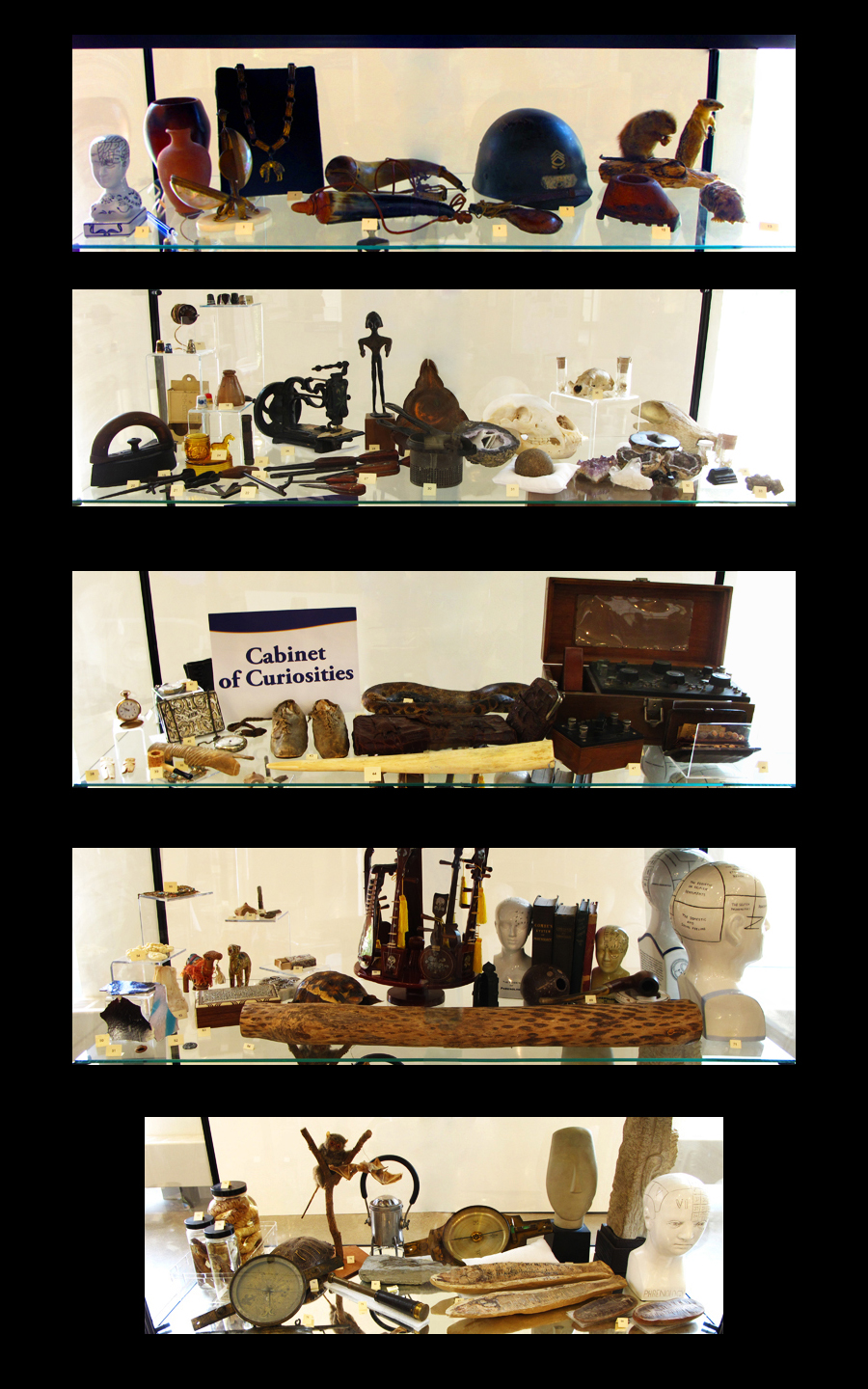
Phrenology Head Inkwell
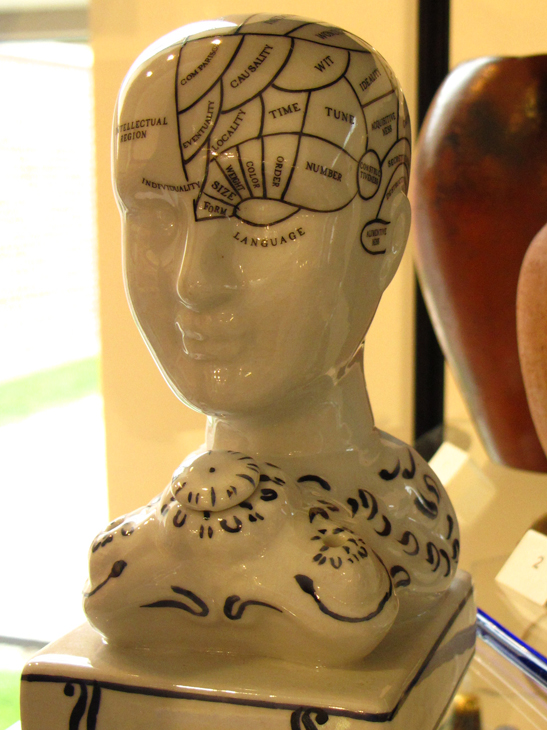
Phrenology Head Inkwell
with Glass Stylus
Dr. Robert Tigner, Psychology Department
Depicting a supposed "map" of sections on a skull corresponding to personality traits, this head, along with the practice of phrenology, lasted from the 1810s to the 1840s, when surgeons were able to identify functions associated with areas of the actual brain, and not the skull.
Watch Stand
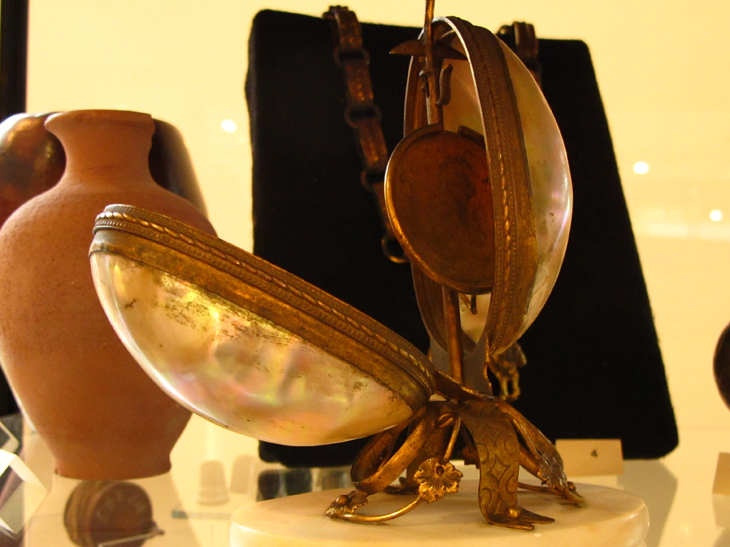
Watch Stand, mother-of-pearl
Received from Dr. Pauline D. Knobbs,
E. M. Violette Museum
Egyptian Vase
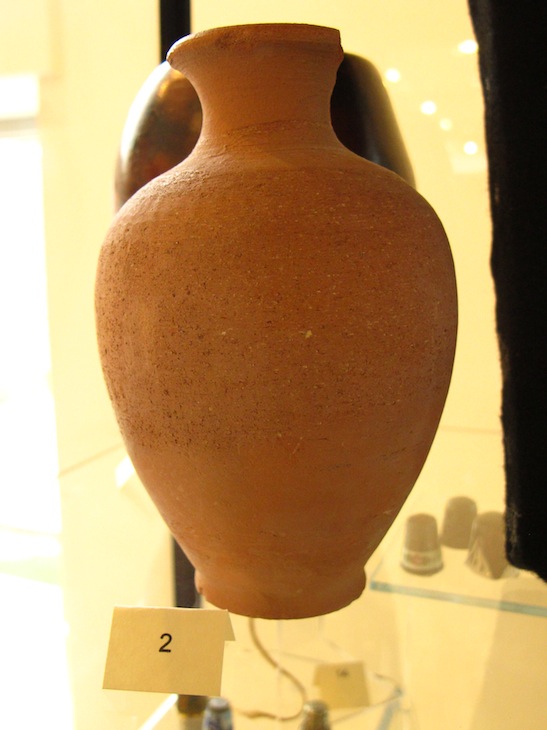
Egyptian Vase, modern
Private Collection
Badarian Pot
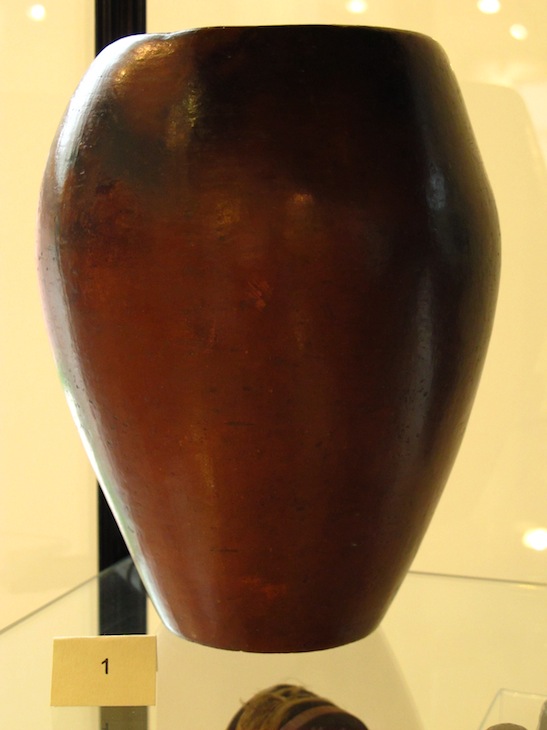
Badarian Pot, reproduction of Egyptian original
c. 4000 BCE
Private Collection
This reproduction of an early Egyptian beaker was made by Mike Murawski, a 2000 Truman graduate with a double major in Art History and History. The original pot, like the modern copy, was hand built from coils of clay, rather than thrown on a wheel. As it dried before being fired, the surface was polished by rubbing a smooth stone or piece of leather over the surface to polish it, which also helps it hold water better. The black and red color comes from the firing in a smokey kiln. This shape could have been used to hold grain or liquids, perhaps beer, which was made and drunk in Egypt from predynastic times.
Collar of the Order of the Golden Fleece
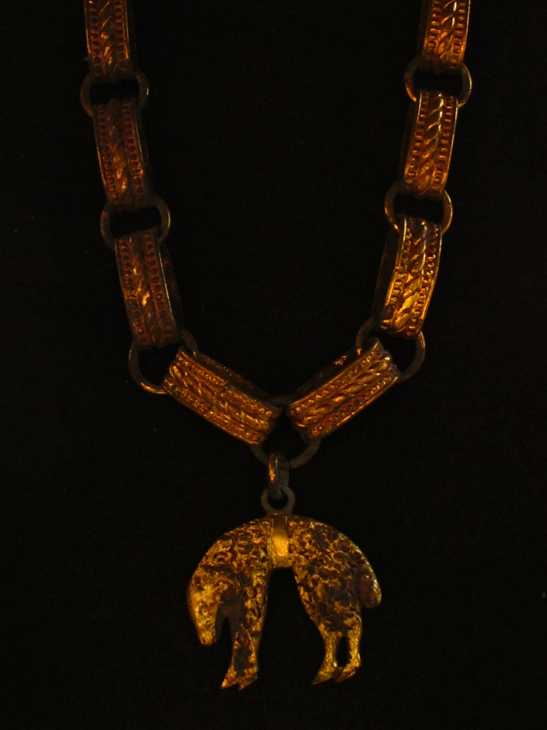
Collar of the Order of the Golden Fleece
E. M. Violette Museum Collection
This item is a replica of the golden jewelry worn by members of the Order of the Golden Fleece in fifteenth to sixteenth century Europe. The Order of the Golden Fleece was a chivalric order of knights who served Philip the Good of Bruges. The Order was created by Philip the Good.
Powder Horn with Strap
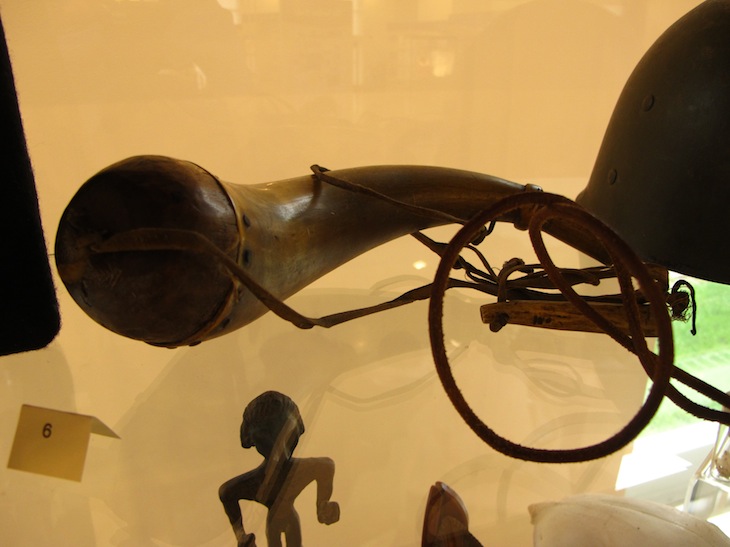
Powder Horn With Strap
Received from Frank Cassity, E. M. Violette Museum
Possibly from the Civil War era. Made of leather and metal with a strap to either tie to the waist or sling over the shoulder.
Powder Horn
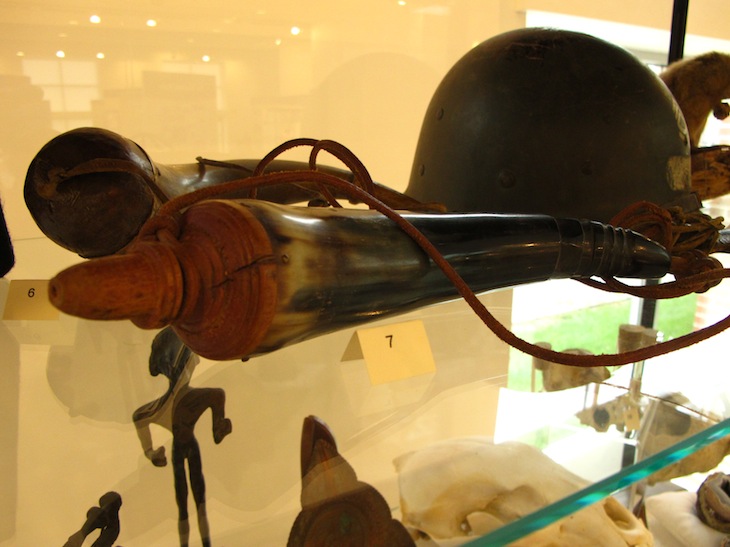
Powder Horn
Professor Bob Jones, Art Department
Gunpowder Bag

Gunpowder Bag, leather
Received from Frank Cassity, E. M. Violette Museum
Helmet Liner, WWII

Helmet Liner, WWII
Received from Floyd Wade, E. M. Violette Museum
Pony or Donkey Shoe

Pony or Donkey Shoe
Professor Bob Jones, Art Department
Carved from wood in the shape of a donkey's foot with a donkey's shoe attached to it. Perhaps used as a candle holder.
Muskrat (Ondatra zibethicus)

Muskrat
(Ondatra zibethicus)
Truman State University Biology Department Mammal Collection
Normally used in the classroom as teaching aids, these taxidermied specimens are the rejects of the Biology collection. Because they have been poorly or incorrectly preserved, or in some cases are simply far too unusual, they are not ideal for use in the classroom and have been retired from regular academic use.
Thirteen-Lined Ground Squirrel (Ictidomys thidecemuneaulus)

Thirteen-Lined Ground Squirrel
(Ictidomys thidecemuneaulus)
Truman State University Biology Department Teaching Collection
Normally used in the classroom as teaching aids, these taxidermied specimens are the rejects of the Biology collection. Because they have been poorly or incorrectly preserved, or in some cases are simply far too unusual, they are not ideal for use in the classroom and have been retired from regular academic use.
Eastern Mole (Scalopus aquaticus)
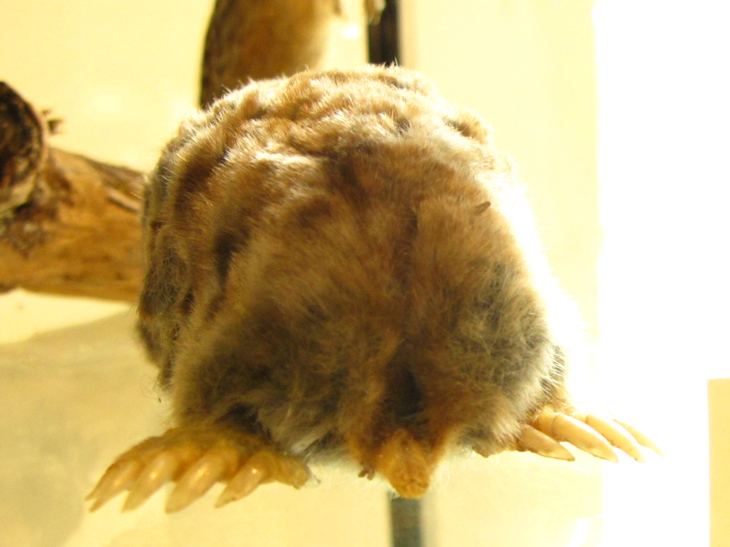
Eastern Mole
(Scalopus aquaticus)
Truman State University Biology Department Teaching Collection
Normally used in the classroom as teaching aids, these taxidermied specimens are the rejects of the Biology collection. Because they have been poorly or incorrectly preserved, or in some cases are simply far too unusual, they are not ideal for use in the classroom and have been retired from regular academic use.
Assorted Thimbles
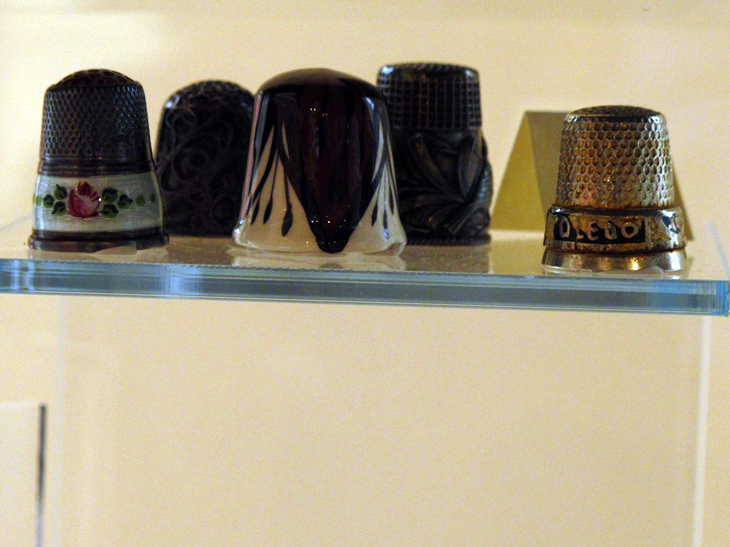
Assorted Thimbles
Dr. Dana Vazzana, Math and Computer Science Department
Dr. Vazzana received these thimbles from a family friend who would house-sit for professors at other universities. When the professors would go on trips, they would bring back a thimble from the place that they visited for Dr. Vazanna's friend. One in this exhibit is from Hawaii, another from France. There are many, many more than the ten featured in this Cabinet of Curiosities! They vary in materials and some are very ornate and highly decorated.
Spool with Flax Yarn
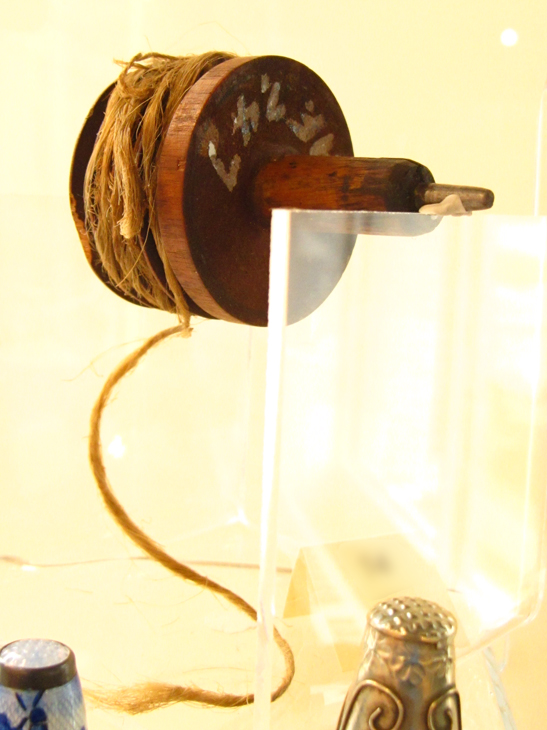
Spool with Flax Yarn
E. M. Violette Museum Collection
Assorted Thimbles
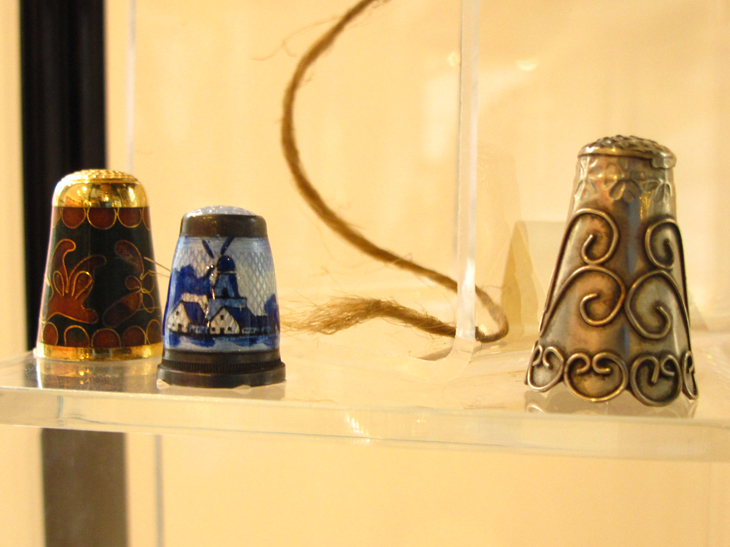
Assorted Thimbles
Dr. Dana Vazzana, Math and Computer Science Department
Dr. Vazzana received these thimbles from a family friend who would house-sit for professors at other universities. When the professors would go on trips, they would bring back a thimble from the place that they visited for Dr. Vazanna's friend. One in this exhibit is from Hawaii, another from France. There are many, many more than the ten featured in this Cabinet of Curiosities! They vary in materials and some are very ornate and highly decorated.
Inkwell, ceramic
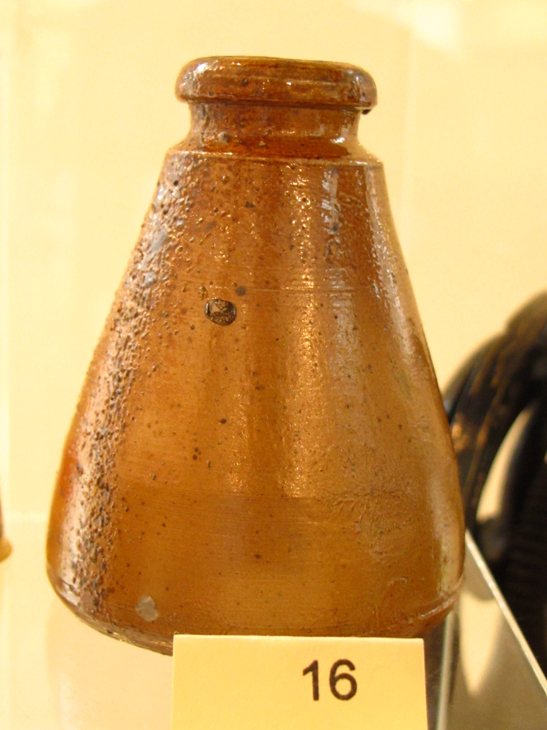
Inkwell, ceramic
Gift of Rachel Lynne Rowe, E. M. Violette Museum
Assorted Thimbles

Assorted Thimbles
Dr. Dana Vazzana, Math and Computer Science Department
Dr. Vazzana received these thimbles from a family friend who would house-sit for professors at other universities. When the professors would go on trips, they would bring back a thimble from the place that they visited for Dr. Vazanna's friend. One in this exhibit is from Hawaii, another from France. There are many, many more than the ten featured in this Cabinet of Curiosities! They vary in materials and some are very ornate and highly decorated.
Matchbox Holder, metal
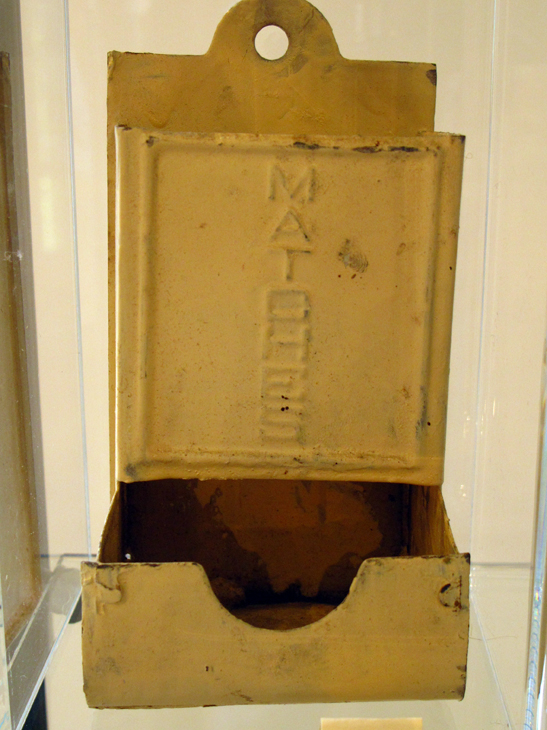
Matchbox Holder, metal
Received from Mrs. Harold Kersey, E. M. Violette Museum
Sad Iron with Removable Handle
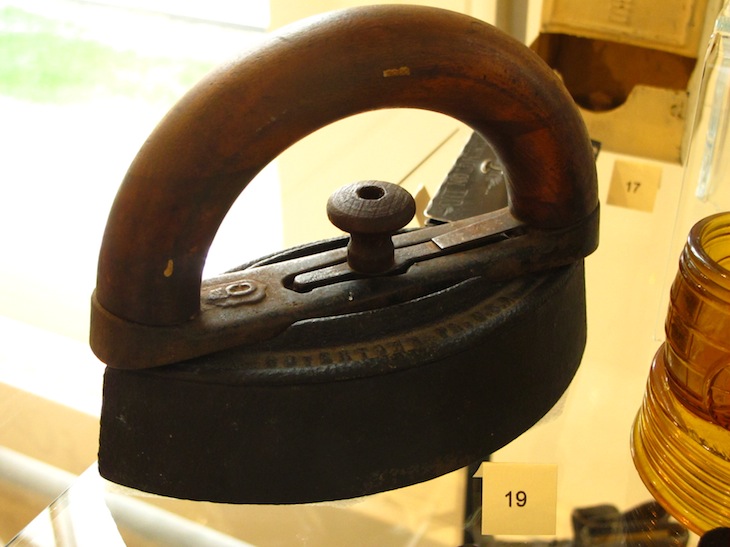
Sad Iron with Removable Handle
Received from Dr. Mark Laughlin, E. M. Violette Museum
Sculptural Toothpick Holder, glass
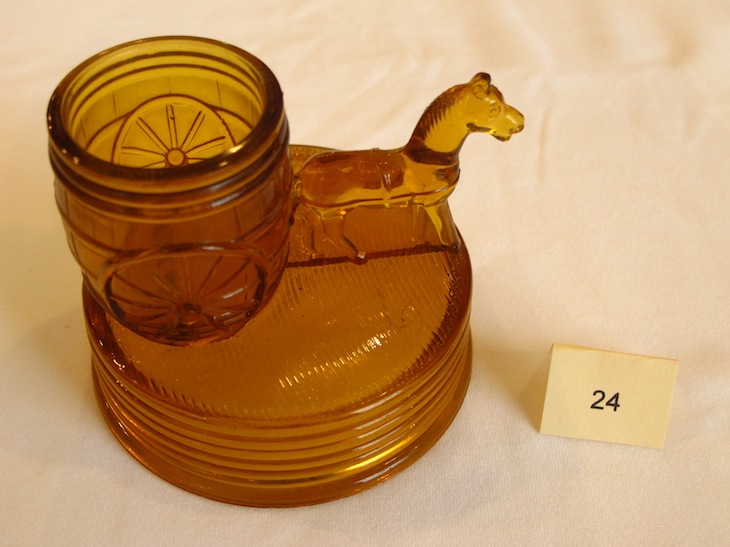
Sculptural Toothpick Holder, glass
Received from Mrs. Eugene Smith, E. M. Violette Museum
Not much information is known about this ornate item. It likely dates to around the 1960s and features an unusual design for a toothpick holder: a horse and barrel.
Compass Divider
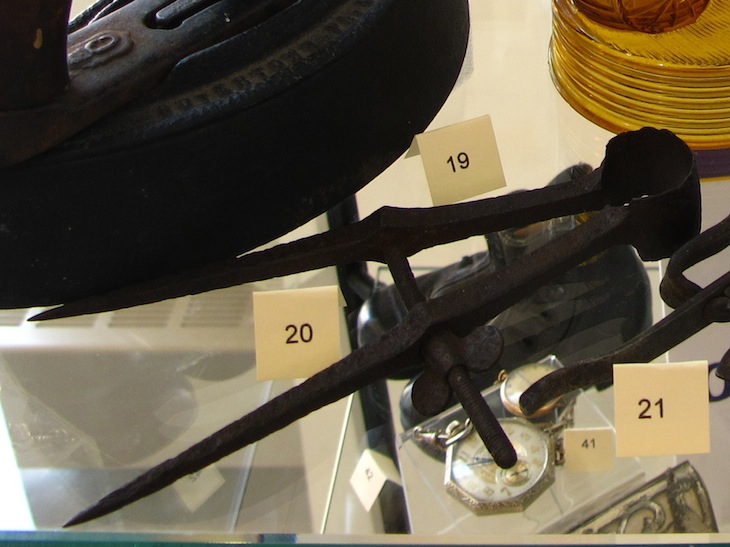
Compass Divider
Received from Mr. Frank Cassity, E. M. Violette Museum
Fleam
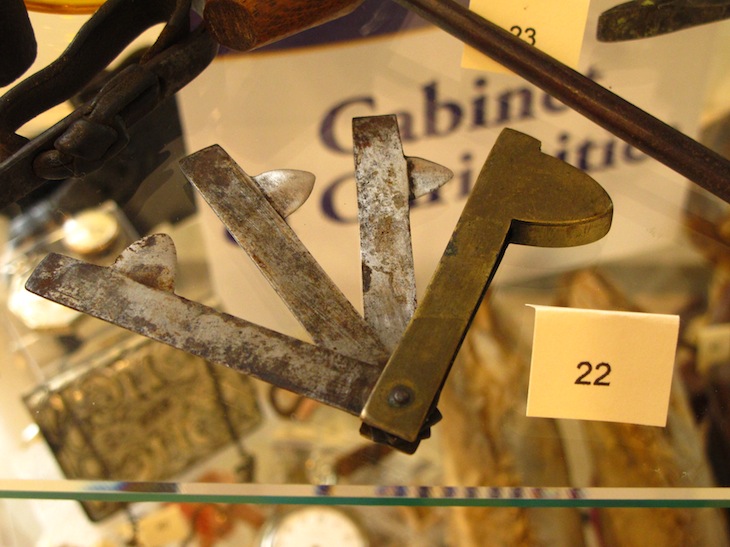
Fleam
Professor Bob Jones, Art Department
Veterinary bloodletting device, although this one resembles the type of tool used for human medical bloodletting. This treatment was once thought of as a proper way to heal sicknesses.
Corn Husker, metal

Corn Husker, metal
Dr. Paula Cochran, Communication Disorders Department
Tooth Puller
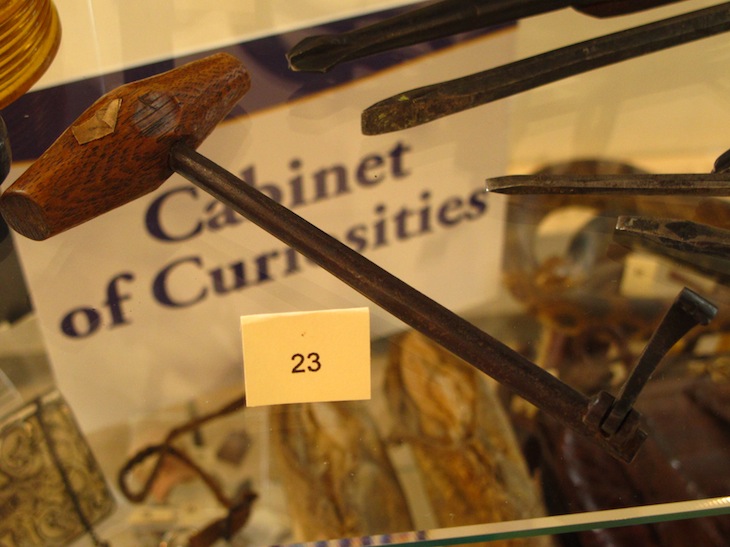
Tooth Puller
Received from Mr. Frank Cassity, E. M. Violette Museum
Homemade tooth pulling device used prior to the 1900s. Also known as a "Toothkey."
Screwdrivers
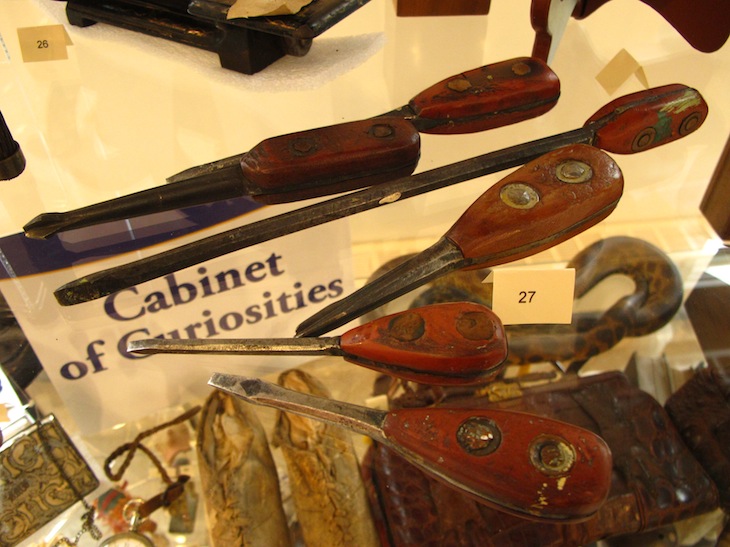
Screwdrivers
Harry J. Cochran Collection
Handmade by Harry J. Cochran.
Sewing Machine
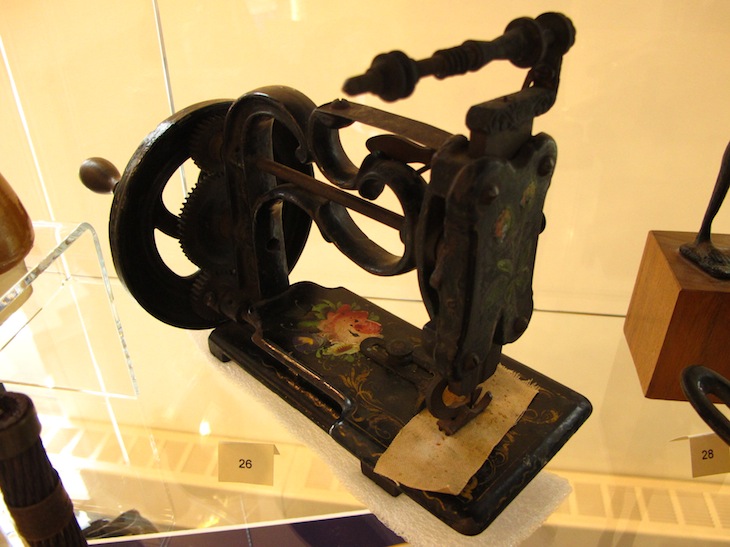
Sewing Machine
Foster Estate, E. M. Violette Museum
Bronze Statuette

Bronze Statuette
Private Collection
Reproduction of Greek original c. 700 BCE.
Ashtray from Africa
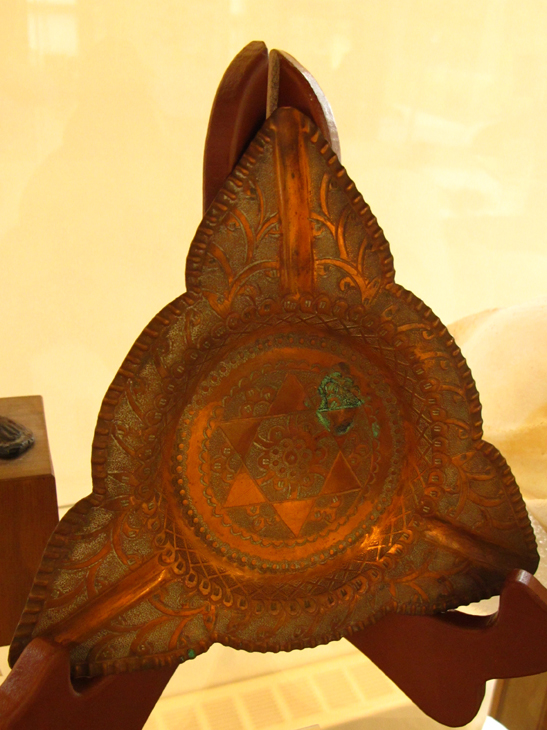
Ashtray from Africa
E. M. Violette Museum Collection
Potato Ricer
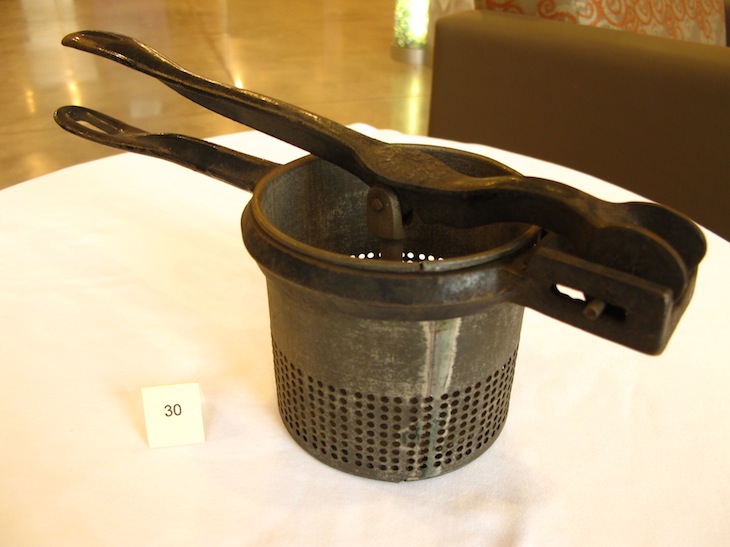
Potato Ricer
E. M. Violette Museum Collection
Geode with White Angled Sheets
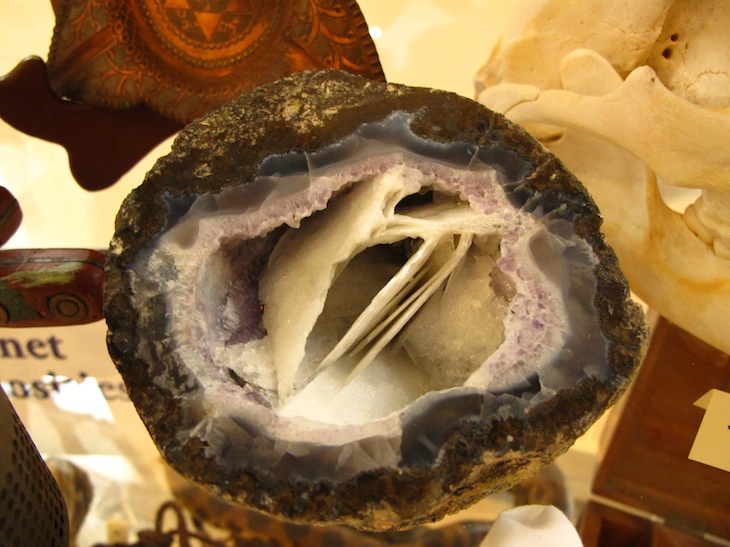
Geode with White Angled Sheets
Dr. Kevin Minch, The Truman Institute
Bear Skull

Bear Skull
Doug Reinsch, Military Science
Hunted by Mr. Reinsch himself with a bow and arrow.
Native American Grinding Stone

Native American Grinding Stone
Dr. Kevin Minch, The Truman Institute
Small Rodent Skeletons
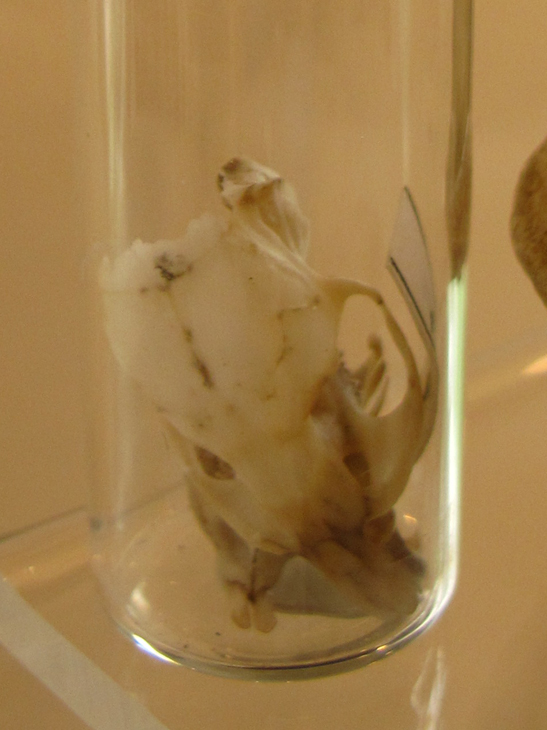
Small Rodent Skeletons
Truman State University Biology Department Teaching Collection
Each vial contains the bones necessary to form the complete skeleton of the animal. Every individual bone is labeled so they can be accurately reconstructed if so desired.
Small Mammal Skull

Small Mammal Skull
Truman State University Biology Department Teaching Collection
Small Rodent Skeletons
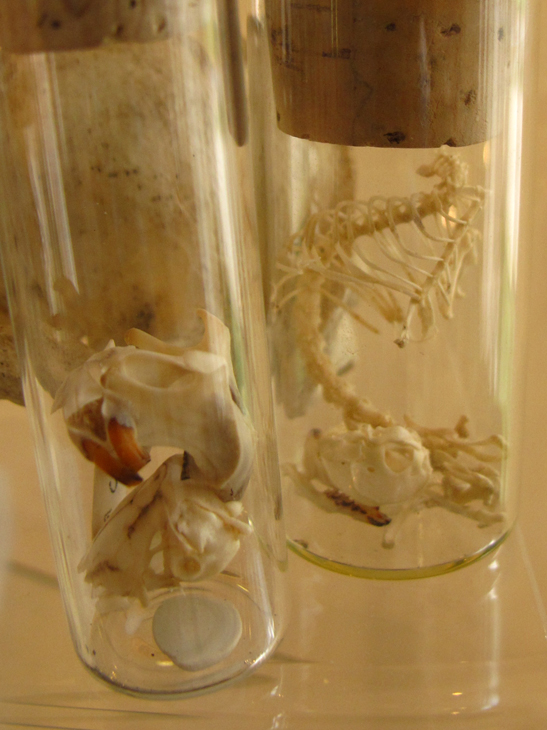
Small Rodent Skeletons
Truman State University Biology Department Teaching Collection
Each vial contains the bones necessary to form the complete skeleton of the animal. Every individual bone is labeled so they can be accurately reconstructed if so desired.
Assorted Geodes and Gems
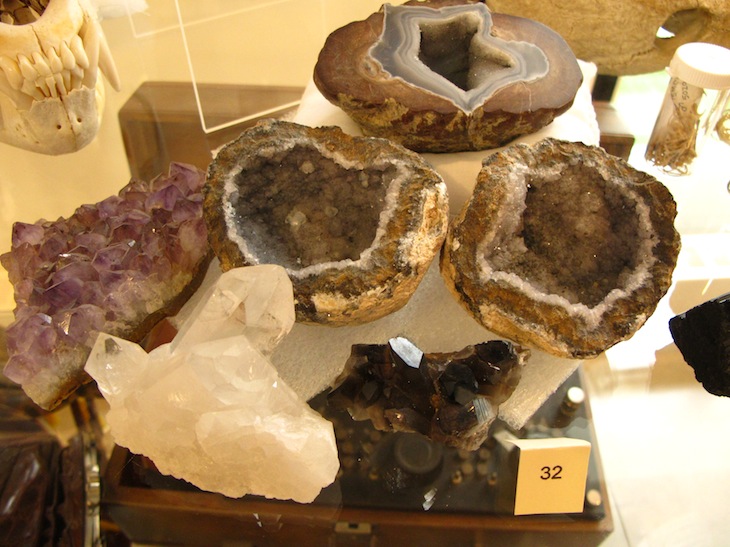
Assorted Geodes and Gems
Dr. Kevin Minch, The Truman Institute
Polished geode, cracked geode in two halves, Amethyst, and Tourmaline.
Alligator Snapping Turtle Skull (Macrochelys temminckii)
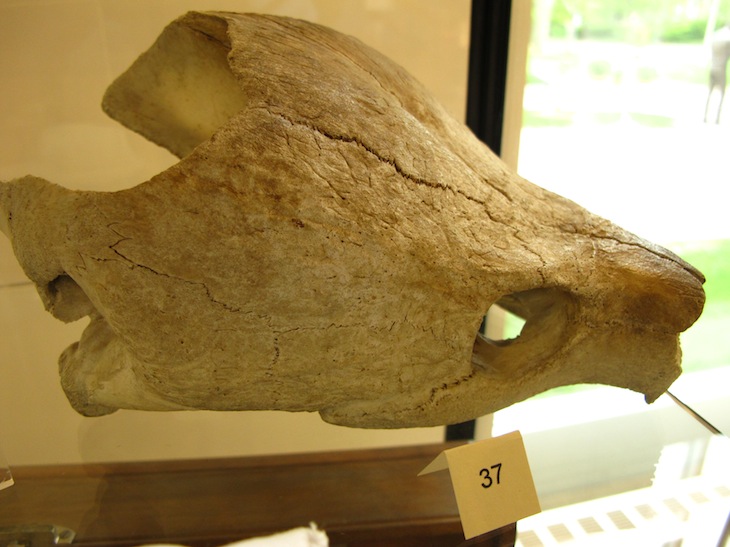
Alligator Snapping Turtle Skull
(Macrochelys temminckii)
Truman State University Biology Department Teaching Collection
A specimen this large is very rare. This one is considered irreplaceable among the Biology faculty.
Small Rodent Skeletons
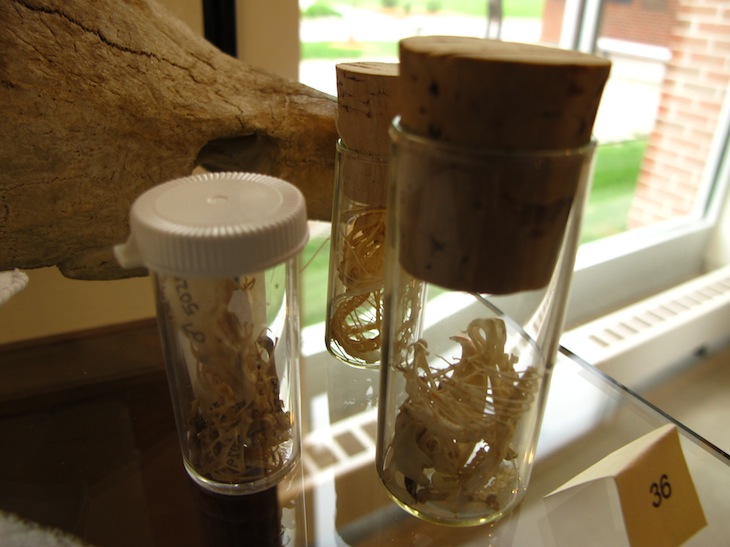
Small Rodent Skeletons
Truman State University Biology Department Teaching Collection
Each vial contains the bones necessary to form the complete skeleton of the animal. Every individual bone is labeled so they can be accurately reconstructed if so desired.
Fossilized Dinosaur Dung Coated with Fools Gold
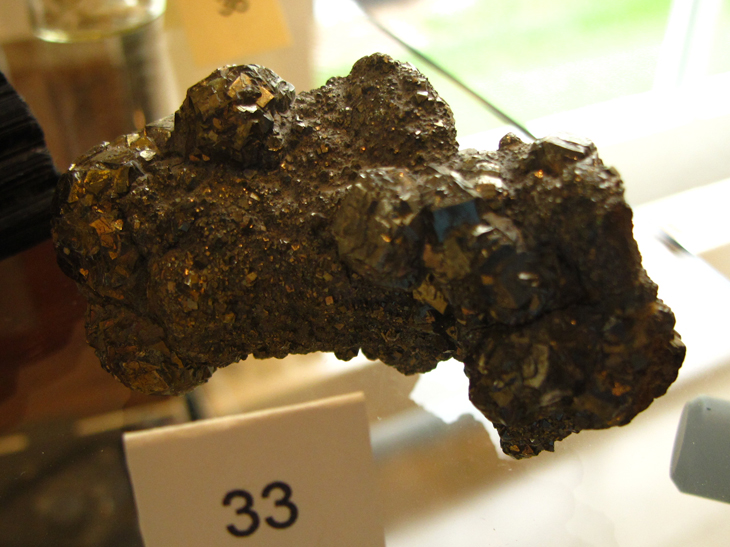
Fossilized Dinosaur Dung Coated with Fools Gold
Dr. Kevin Minch, The Truman Institute
Chain Watch & Ladies Lapel Watch
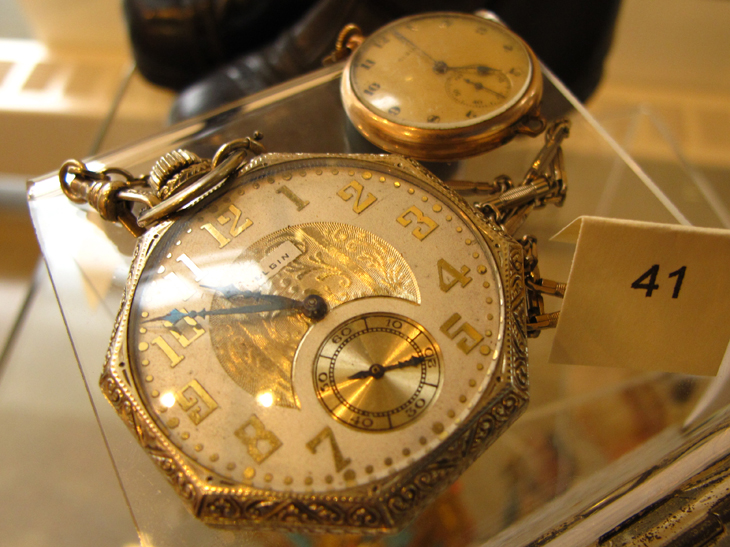
Chain Watch & Ladies Lapel Watch
Professor Bob Jones, Art Department
Child's Shoes, black leather

Child's Shoes, black leather
Gift of Mrs. Kate Buck, E. M. Violette Museum
Ladies Purse c. 1900
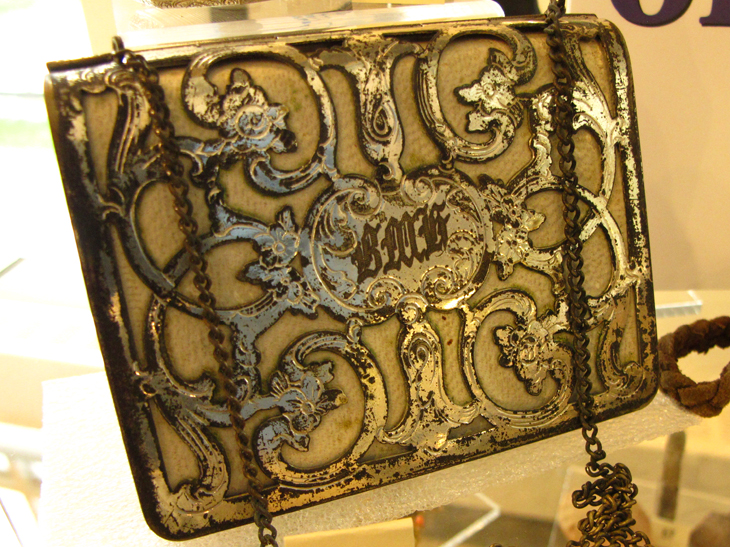
Ladies Purse c. 1900
Received from Mrs. R. Violette Campbell, E. M. Violette Museum
Hunter's Case Pocket Watch
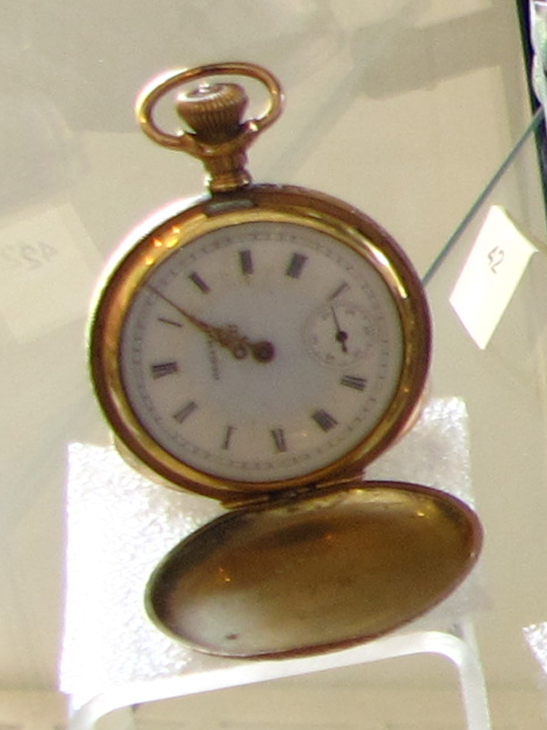
Hunter's Case Pocket Watch
Professor Bob Jones, Art Department
Coptic Dolls

Coptic Dolls
Private Collection
Corn Cob Pipe
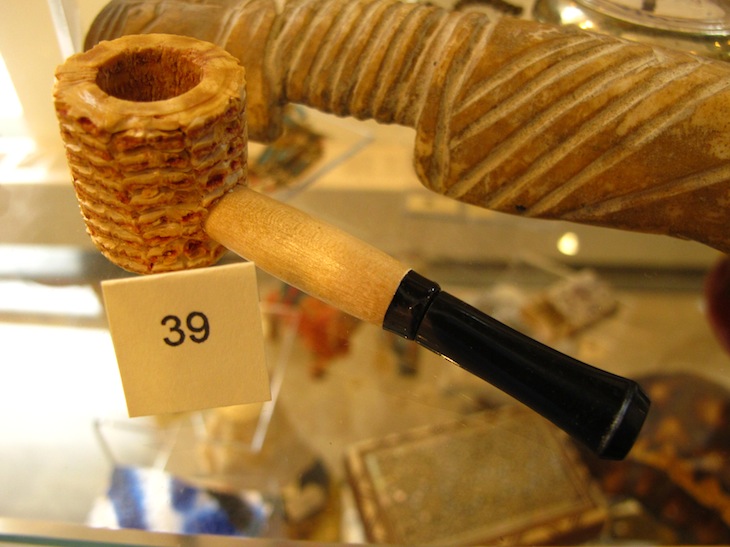
Corn Cob Pipe
Dr. Paula Cochran, Communication Disorders Department
Coptic Doll
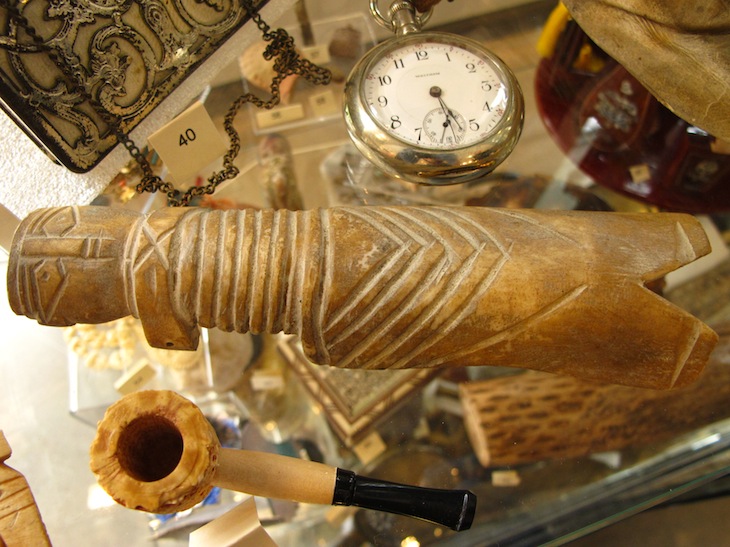
Coptic Doll
Private Collection
Railroad Pocket Watch
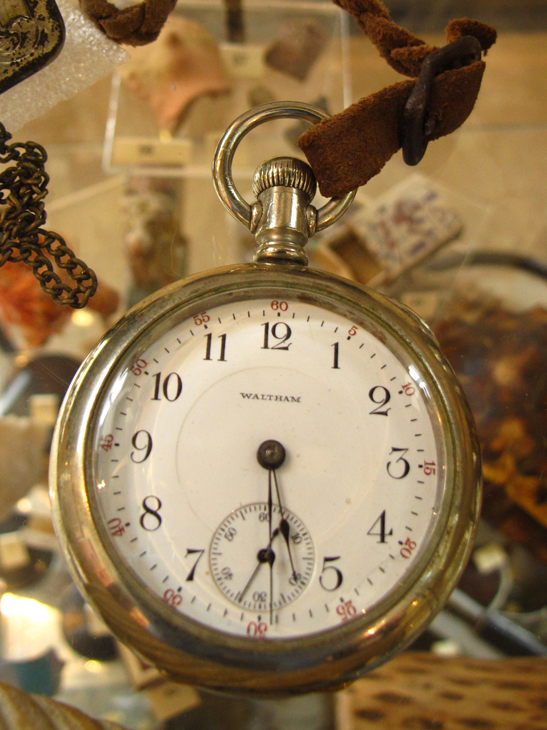
Railroad Pocket Watch
Professor Bob Jones, Art Department
Dancing Slippers c. 1830
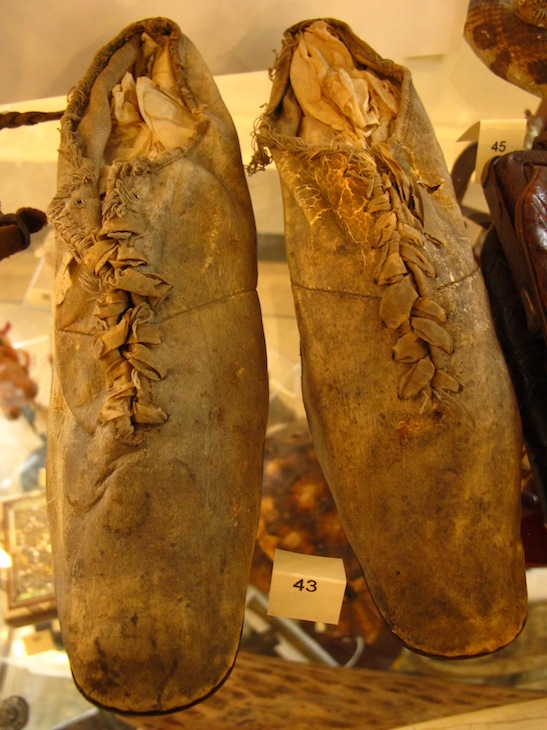
Dancing Slippers c. 1830
E. M. Violette Museum Collection
Cribbage Board, Engraved Walrus Tusk

Cribbage Board, Engraved Walrus Tusk
Received from Wendell Cordle, E. M. Violette Museum Collection
Purse, alligator skin

Purse, alligator skin
Received from Mrs. Annie Gilman, E. M. Violette Museum
Bullsnake (Pituophis catenifer sayi)

Bullsnake
(Pituophis catenifer sayi)
Truman State University Biology Department
Dry taxodermy was a popular method of preserving snakes and reptiles outside of the jar in the 1930s. The practice didn't last long, as better and more efficient methods of preservation were discovered soon after. This specimen is possibly old enough to be part of the Civilian Conservation Corps. program of Franklin Roosevelt's New Deal.
Coin Purse, alligator skin
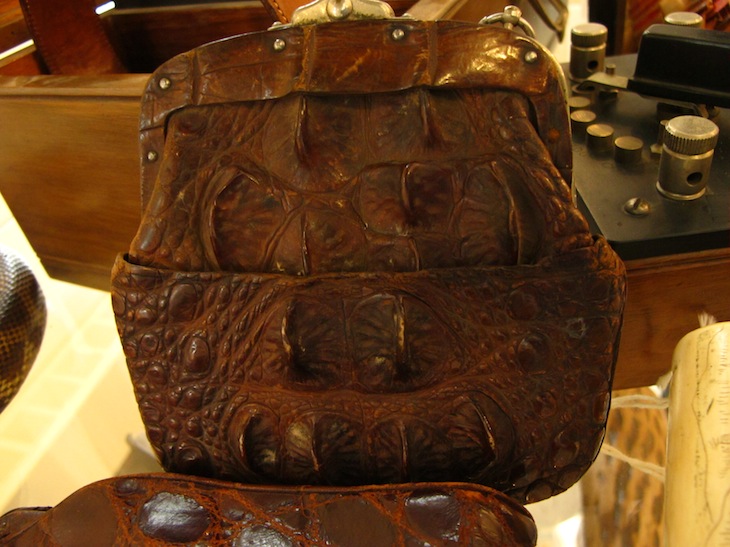
Coin Purse, alligator skin
Received from Mrs. Annie Gilman, E. M. Violette Museum
Capacity Meter
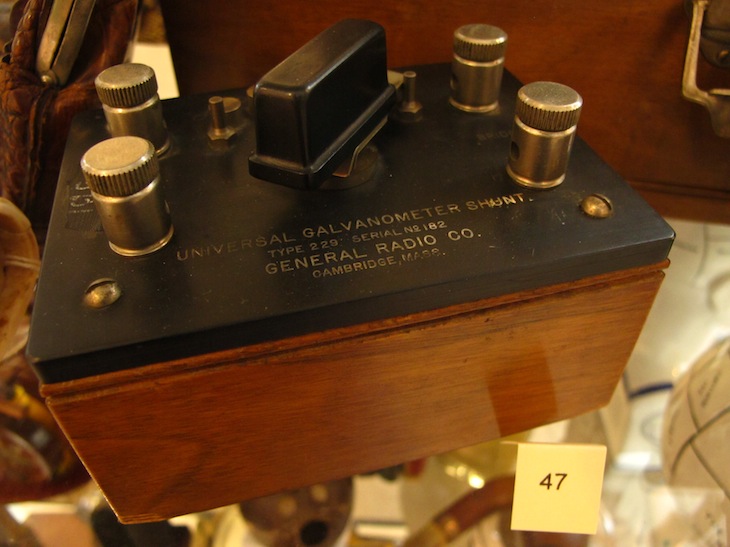
Capacity Meter
Truman State University Physics Department
General Radio Co., Type 240, Serial #75. This physics equipment is associated with electricity and magnetism within a field.
Galvanometer Shunt
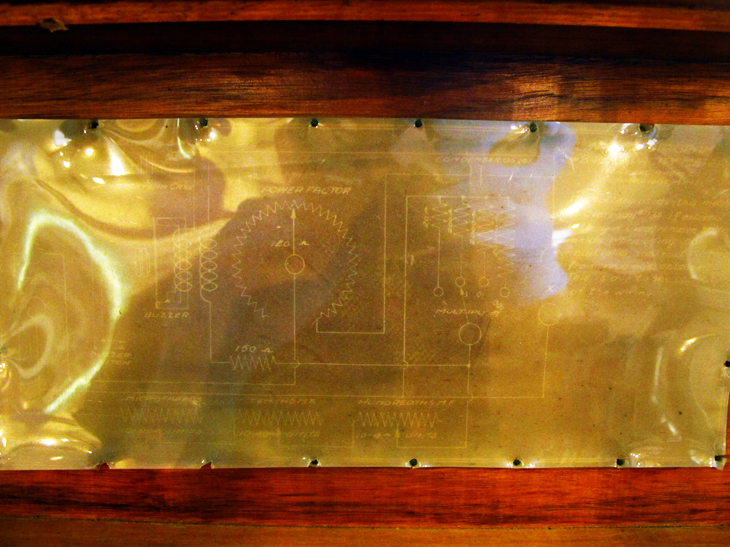
Galvanometer Shunt
Truman State University Physics Department
General Radio Co., Type 189, Serial #182. Seen here is a wiring diagram for the device.
Galvanometer Shunt

Galvanometer Shunt
Truman State University Physics Department
General Radio Co., Type 189, Serial #182. These devices were found when the Physics department moved from Barnett Hall to McGruder Hall.
Galvanometer Shunt
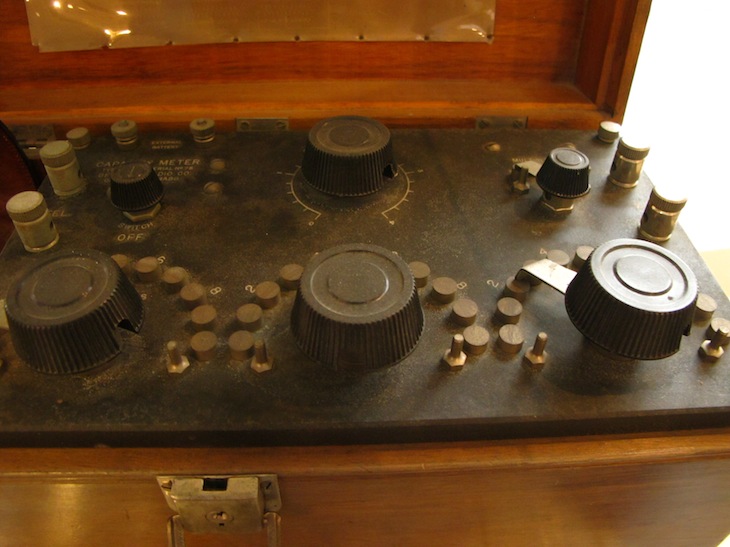
Galvanometer Shunt
Truman State University Physics Department
General Radio Co., Type 189, Serial #182. Both items were purchased by the university between 1940 and 1950. Picture: various buttons and control knobs.
Medicine Case

Medicine Case
E. M. Violette Museum Collection
Dated to possibly the late 19th Century, there is not much information about this collection of vials and medicines. In it, there are roughly a dozen glass tubes with remnants of various chemicals and powders most likely used to make tonics and medications. Also, quite a few newspaper clippings were found in the case as well.
Gold Bracelet with Mummy Beads, Egypt

Gold Bracelet with Mummy Beads, Egypt
Dr. Lynn Rose, History Department
Ceramic Face from Abu Mina, Egypt
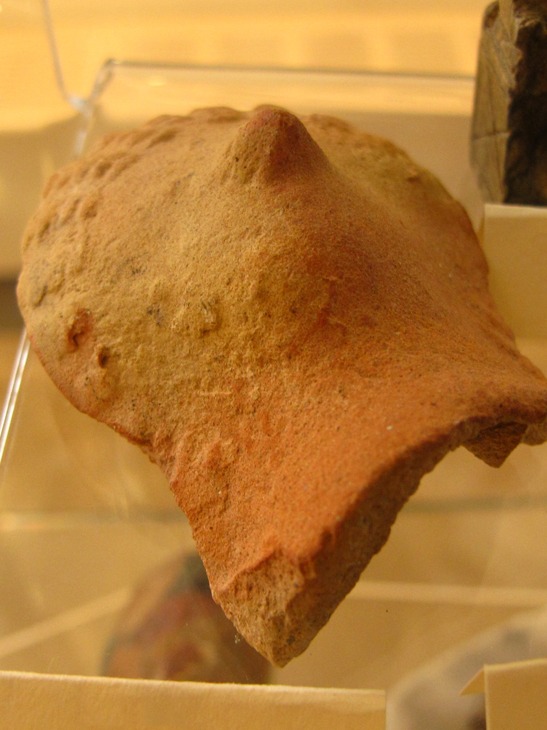
Ceramic Face from Abu Mina, Egypt
Dr. Lynn Rose, History Department
Figurine of Pharaoh
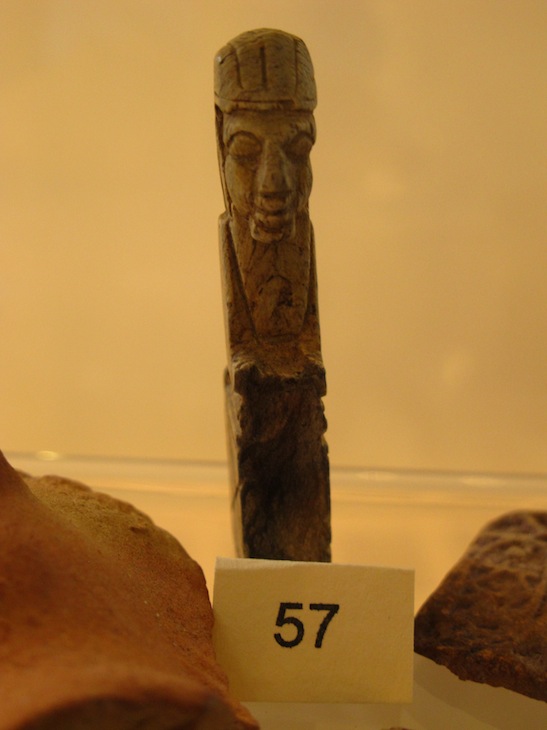
Figurine of Pharaoh
Dr. Lynn Rose, History Department
Amulets Found in Tomb at Sakkarah, Egypt
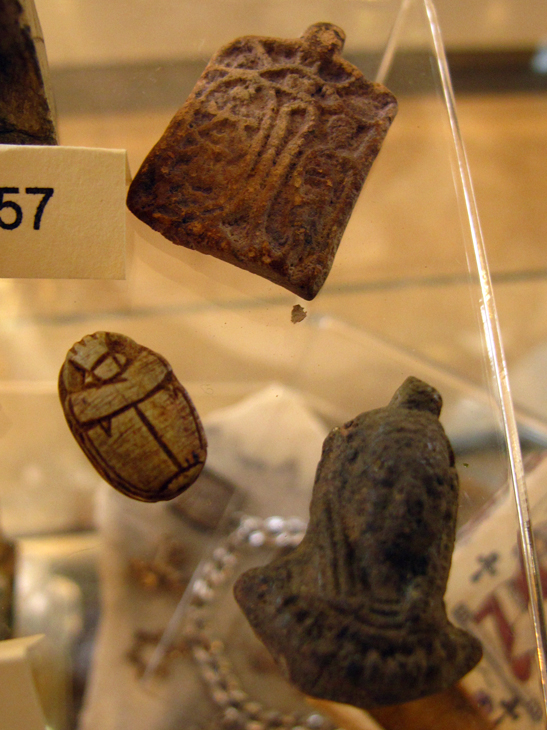
Amulets Found in Tomb at Sakkarah, Egypt
Received from Ray E. Schwind, E. M. Violette Museum
These stone amulets depict various ancient Egyptian images, including a Scarab on the left. In reality a species of dung beetle, the Scarabaeus sacer was considered sacred to the Ancient Egyptians. Don't worry, though; if this amulet were dropped on the floor it would not turn into a flesh-eating bug as depicted in the Hollywood blockbuster, The Mummy.
Necklace of Elephant Carvings
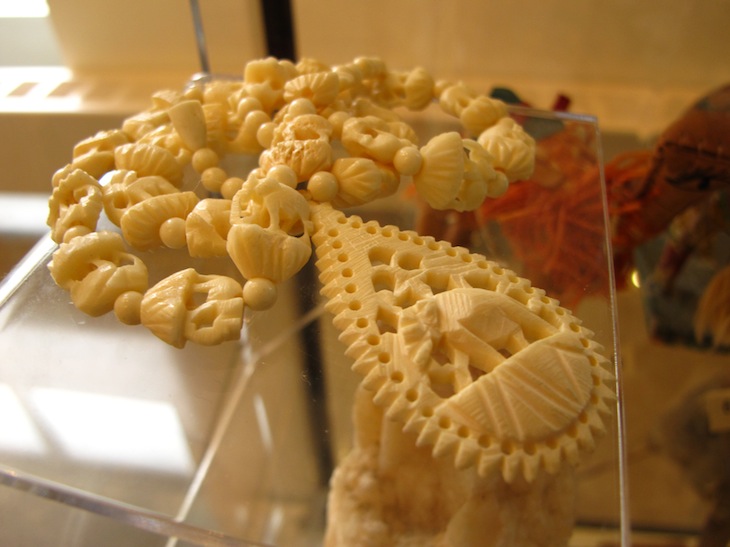
Necklace of Elephant Carvings
Dr. Paula Cochran, Communication Disorders Department
From India. Made of ivory.
Fragments of the Berlin Wall, Germany
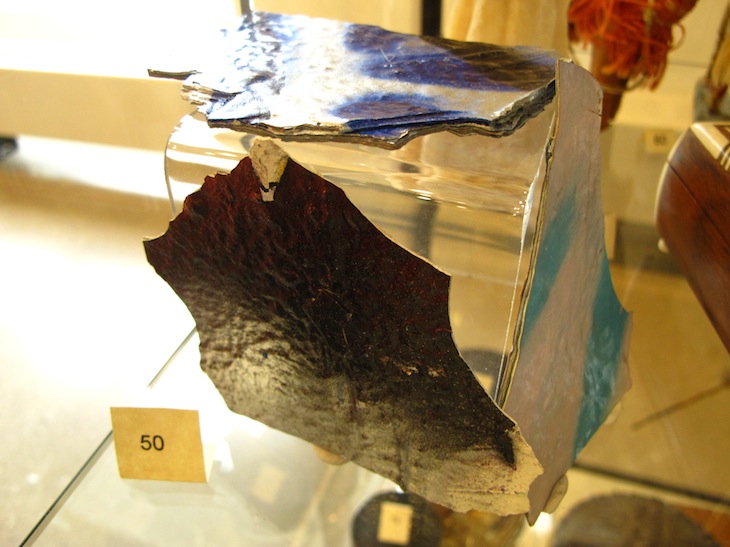
Fragments of the Berlin Wall, Germany
Dr. Lynn Rose, History Department
Alabaster Fragment from Giza, Egypt
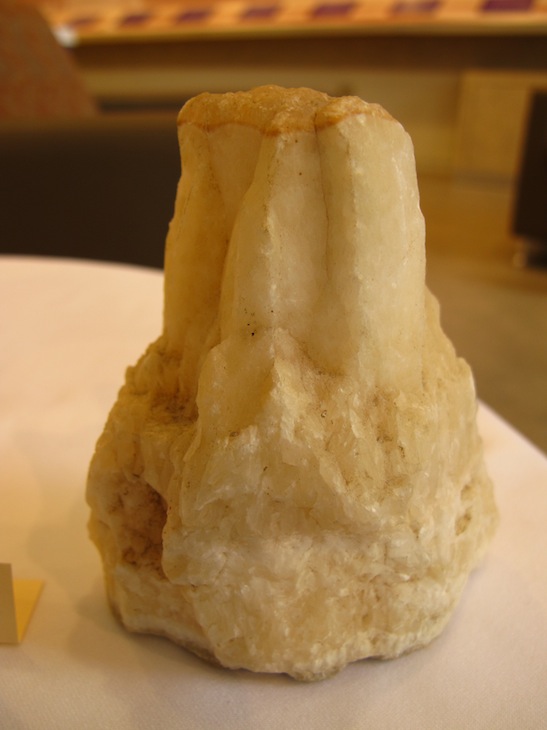
Alabaster Fragment from Giza, Egypt
Dr. Lynn Rose, History Department
Picked up from the top of one of the pyramids at Giza when the lender was a child. At that time, people were allowed to climb the actual pyramids all the way to the top, resulting in damage and small acts of grave-robbing such as this.
Toy Camels, leather and wood

Toy Camels, leather and wood
Dr. Lynn Rose, History Department
As a child, the lender owned three toy camels: a wooden one that her father had himself as a child, one made of actual camel skin, and a third, larger one made of camel skin that was similar to a child's rocking horse.
Inlaid Wooden Box from Egypt

Inlaid Wooden Box from Egypt
Dr. Lynn Rose, History Department
Matchbox of Sahara Sand

Matchbox of Sahara Sand
Dr. Lynn Rose, History Department
Charm Bracelet
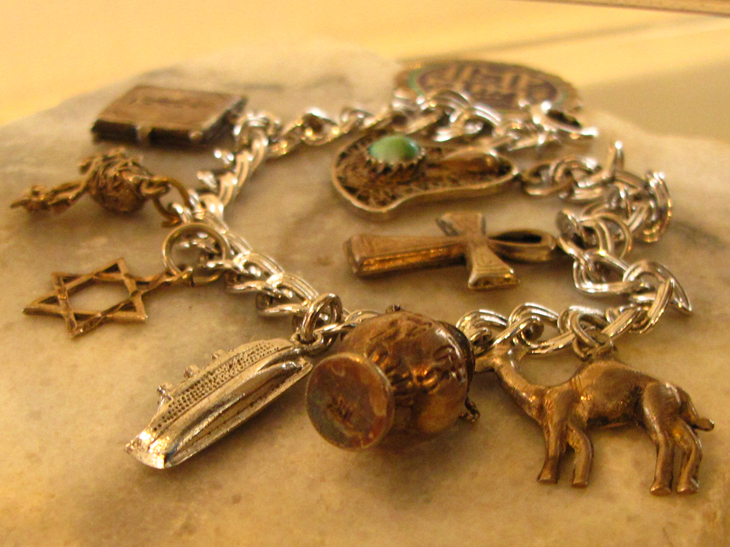
Charm Bracelet
Dr. Lynn Rose, History Department
Russian Tortoise Shell (Kinixys homeana)
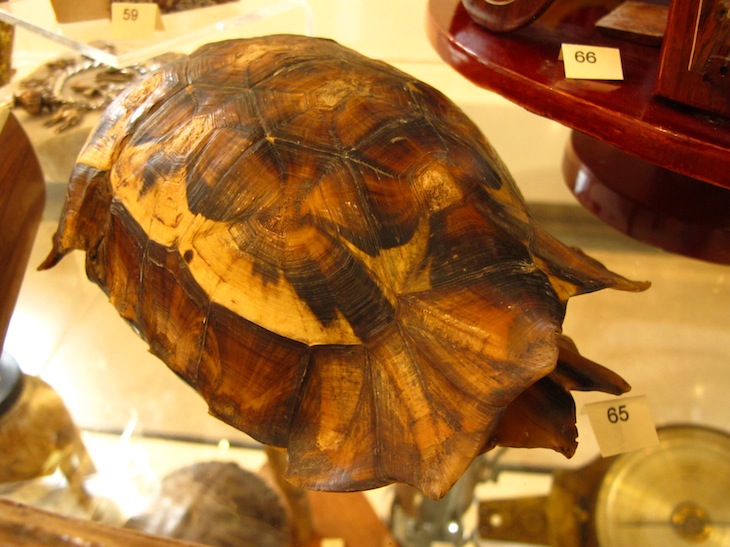
Russian Tortoise Shell
(Kinixys homeana)
Truman State University Biology Department
Cactus Rain Stick from Chile

Cactus Rain Stick from Chile
Dr. Paula Cochran, Communication Disorders Department
Model Vietnamese Stringed Instruments

Model Vietnamese Stringed Instruments
Mrs. Shirley McKamie, Music Department
Model Vietnamese Stringed Instruments
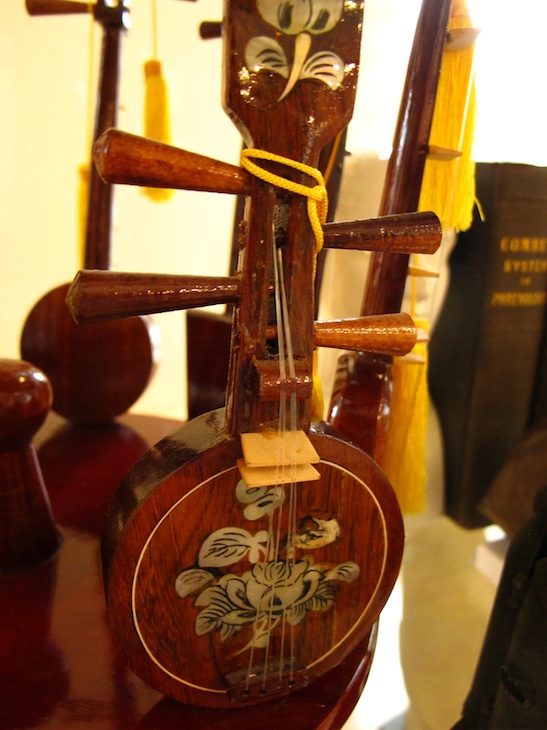
Model Vietnamese Stringed Instruments
Mrs. Shirley McKamie, Music Department
Model of The Iron Maiden
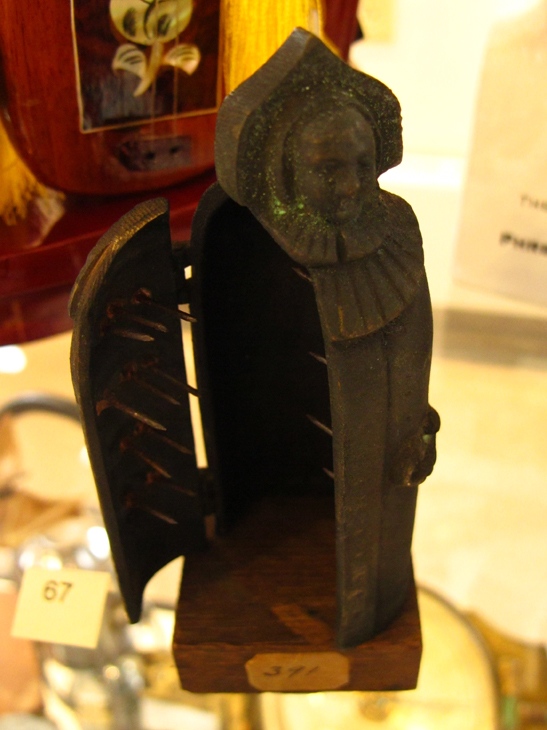
Model of "The Iron Maiden"
Received from Professor Gebhart, E. M. Violette Museum
Miniature medieval torture device of unknown purpose (possibly to torture small rodents and/or Barbie dolls, but unlikely).
Four Phrenology Books
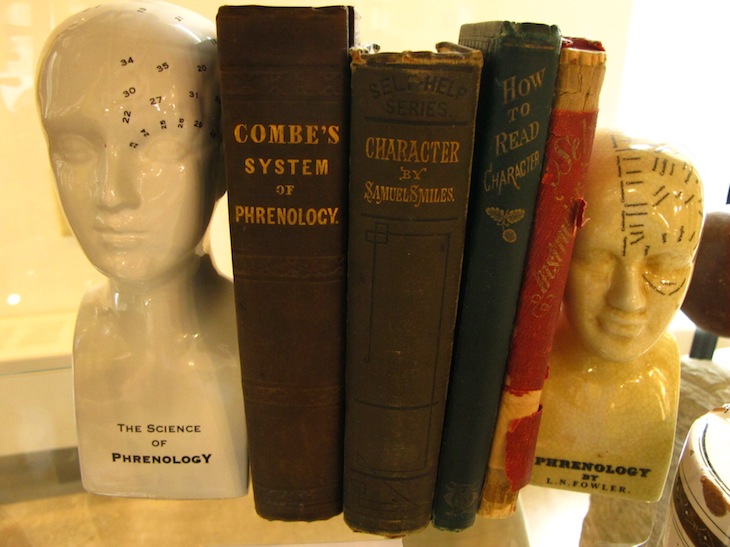
Four Phrenology Books
Dr. Robert Tigner, Psychology Department
Left to right: "Combe's System of Phrenology" (1830), "Character" by Samuel Smiles (1871), "How to Read Character" by Samuel R. Wells (1870), and "New Illustrated Self-instructor in Phrenology and Physiology" by Lorenzo N. Fowler (1869).
Naga Tobacco Pipe
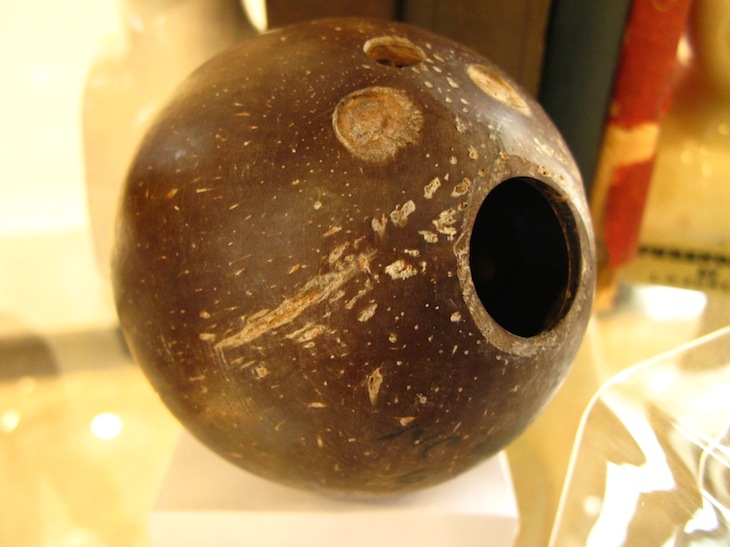
Naga Tobacco Pipe
Gift of Lt. Col. W. M. Reiger, E. M. Violette Museum
Bought by Col. Reiger in Africa. The colonel saw a native man smoking the pipe, and he liked it so much that he bought it from the man on the spot - while he was still smoking it!
World War II German Tobacco Pipe

World War II German Tobacco Pipe
Received from Lewis Shoemaker, E. M. Violette Museum
Ashtray from Cyprus
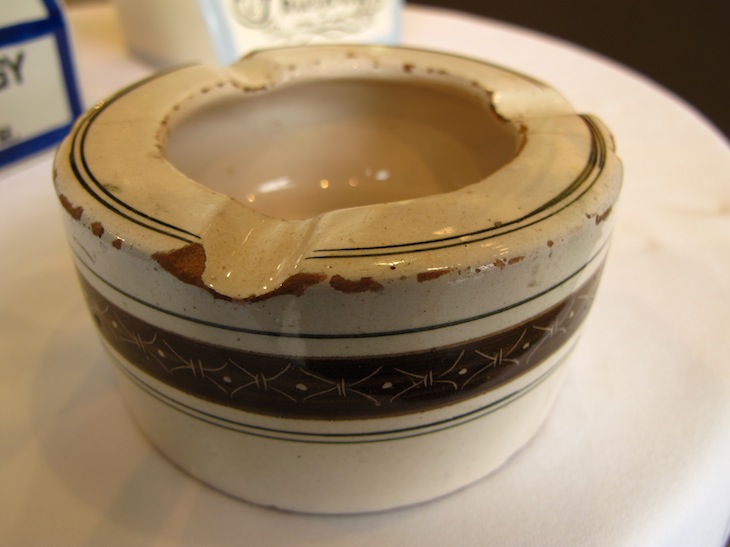
Ashtray from Cyprus
Dr. Lynn Rose, History Department
Large Phrenology Head
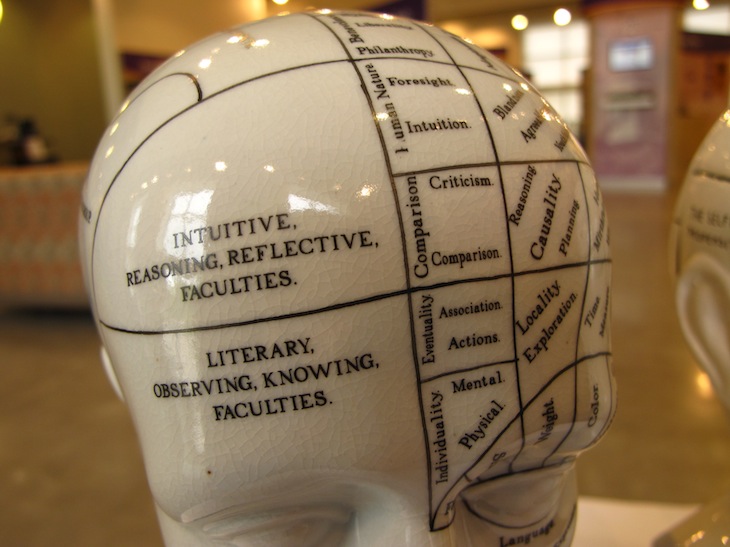
Large Phrenology Head
Dr. Robert Tigner, Psychology Department
Phrenologists identified 27 to 36 locations around the skull and head that supposedly identified traits such as amativeness, acquisitiveness, veneration, etc. One phrenological study found that a group of prostitutes all shared similar readings/head patterns!
Large Phrenology Head
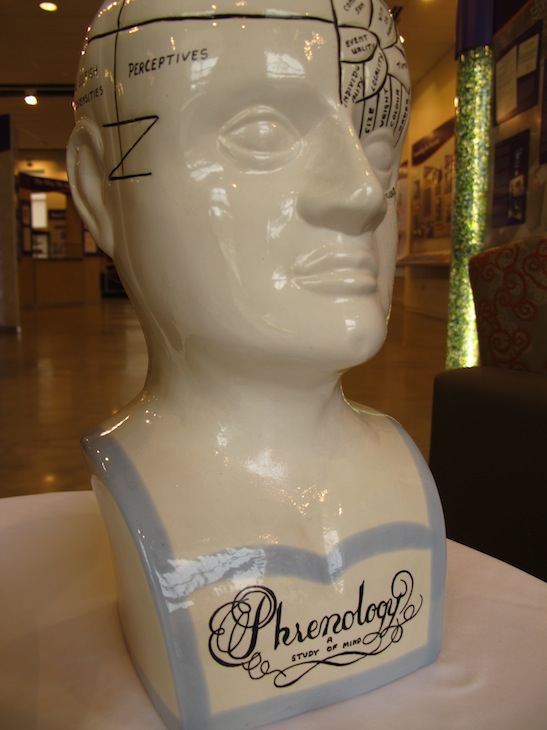
Large Phrenology Head
Dr. Robert Tigner, Psychology Department
On this head is inscribed "Phrenology - A Study of Mind." Phrenology was, by today's standards, terrible science, basing its conclusions on anecdotal evidence, confirmation bias, and unfalsifiable theories. This practice is, however, where the phrase "better get your head checked" come from!
Coin of Alexander the Great
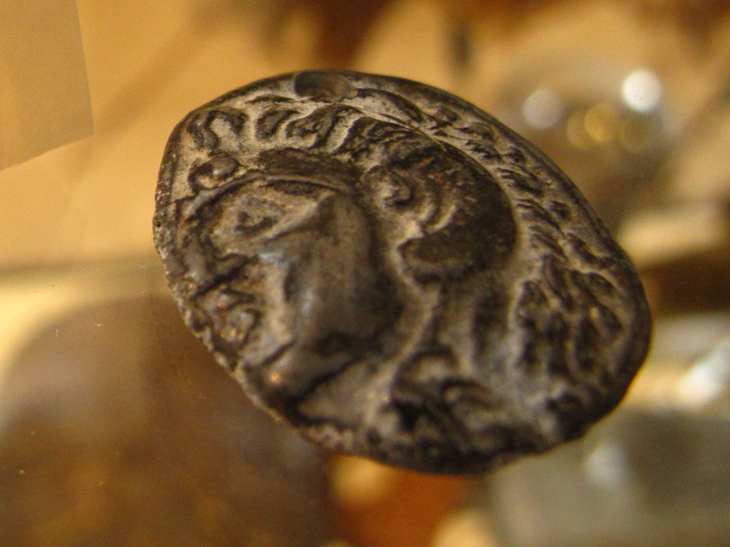
Coin of Alexander the Great
Dr. Lynn Rose, History Department
Carved Basket
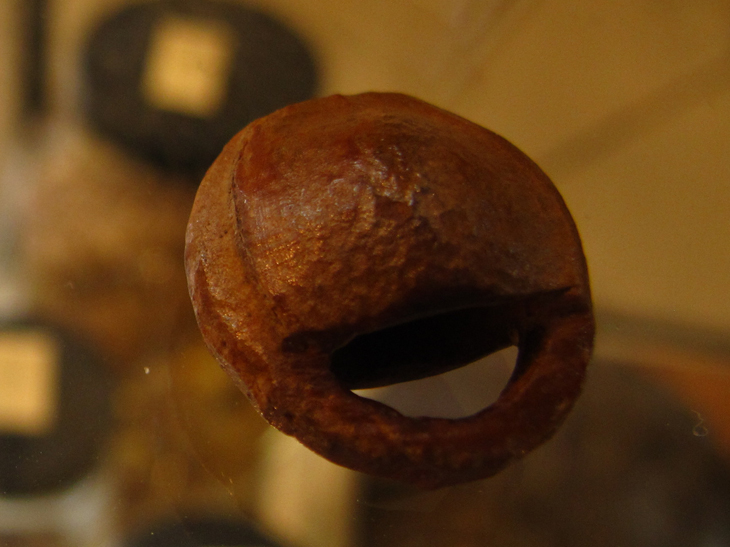
Carved Basket
Dr. Paula Cochran, Communication Disorders Department
Made from a peach pit.
California King Snake in Jar (Lampropeltis getula californiae)
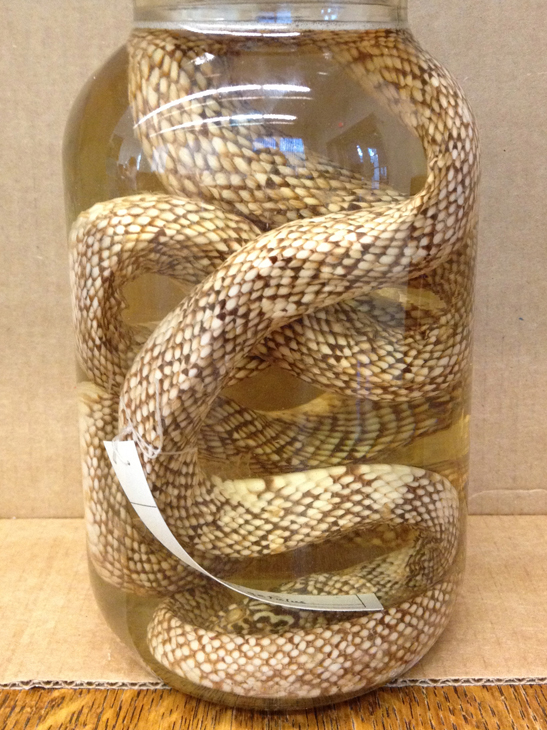
California King Snake in Jar
(Lampropeltis getula californiae)
Truman State University Biology Department
Flying Dragon in Jar (Agamidae draco)
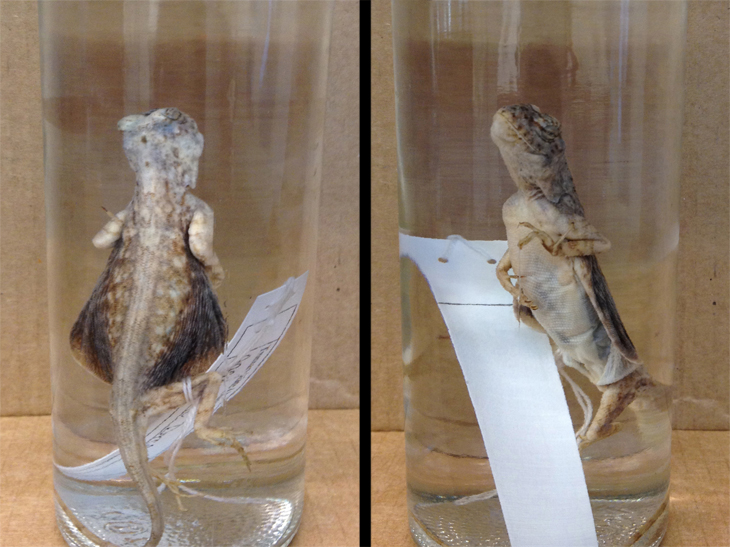
Flying Dragon in Jar
(Agamidae draco)
Truman State University Biology Department
Five Tiger Salamanders in Jar (Ambystoma tigrinum)
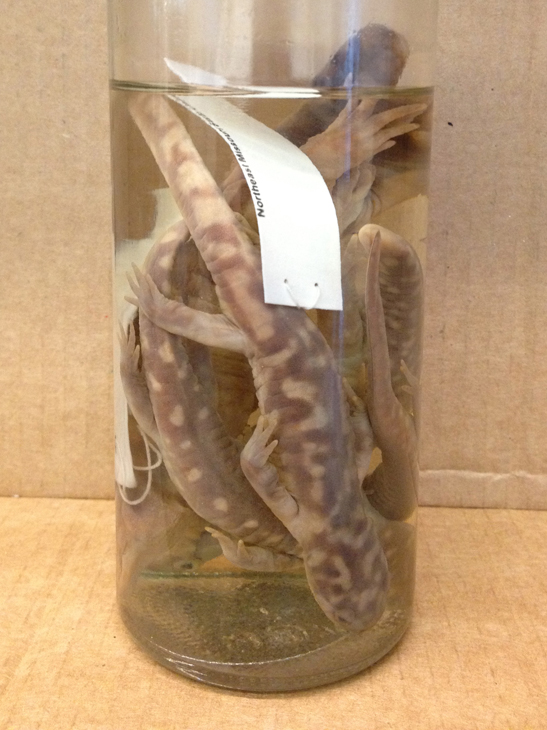
Five Tiger Salamanders in Jar
(Ambystoma tigrinum)
Truman State University Biology Department
Ship's Compass

Ship's Compass
Received from Mr. & Mrs. Orin Porter, E. M. Violette Museum
Taken from a Scottish ship around 1870 by Mr. Porter's grandfather while he worked on the ship.
Red-eared Slider Shell (Trachemys scripta)

Red-eared Slider Shell
(Trachemys scripta)
Truman State University Biology Department
The population of this species of semiaquatic turtle was hugely damaged by the pet industry in the 1990s. This is possibly due in part to the fact that the Red-eared Slider was widely believed to be the species that the Teenage Mutant Ninja Turtles, a popular kids' television show at the time, were based on.
Spyglass, 19th century

Spyglass, 19th century
Received from Mrs. Ralph Bement of Kirksville, MO, E. M. Violette Museum
Tarsier Specimen (family: Tarsiidae)
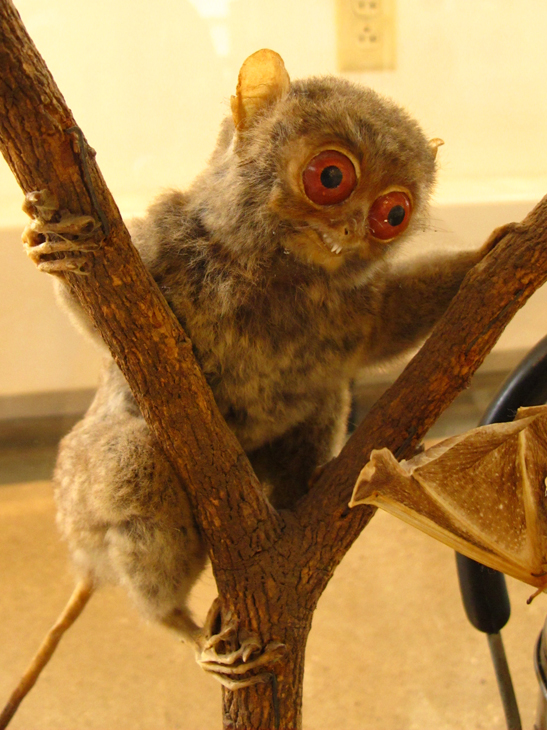
Tarsier Specimen
(family: Tarsiidae)
Truman State University Biology Department Mammal and Teaching Collections
Normally used in the classroom as teaching aids, these taxidermied specimens are the rejects of the Biology collection. Because they have been poorly or incorrectly preserved, or in some cases are simply far too unusual, they are not ideal for use in the classroom and have been retired from regular academic use.
Eastern Pipistrelle Bat (Pipistrellus subflavus)
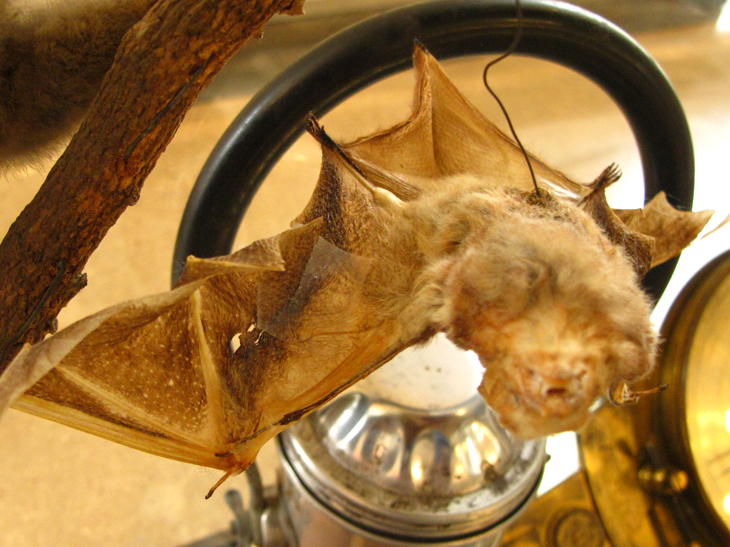
Eastern Pipistrelle Bat
(Pipistrellus subflavus)
Truman State University Biology Department Teaching Collection
Normally used in the classroom as teaching aids, these taxidermied specimens are the rejects of the Biology collection. Because they have been poorly or incorrectly preserved, or in some cases are simply far too unusual, they are not ideal for use in the classroom and have been retired from regular academic use.
Railway Lantern
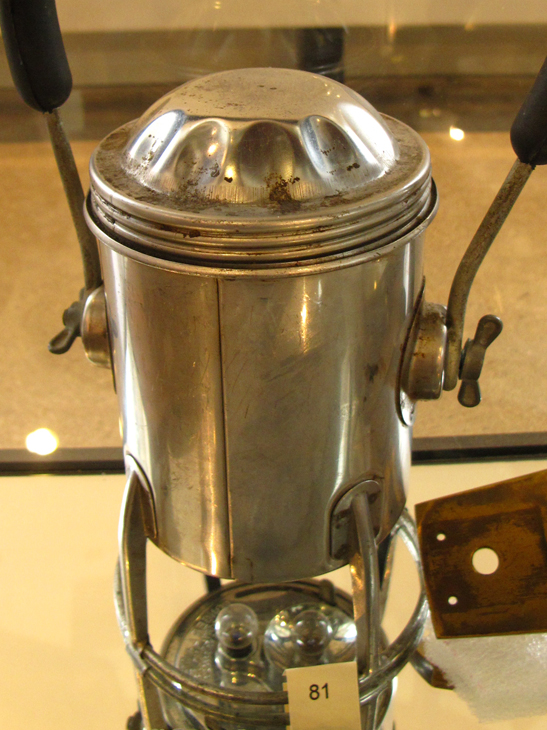
Railway Lantern
Dr. Paula Cochran, Communication Disorders Department
Fossilized Crinoid Stem
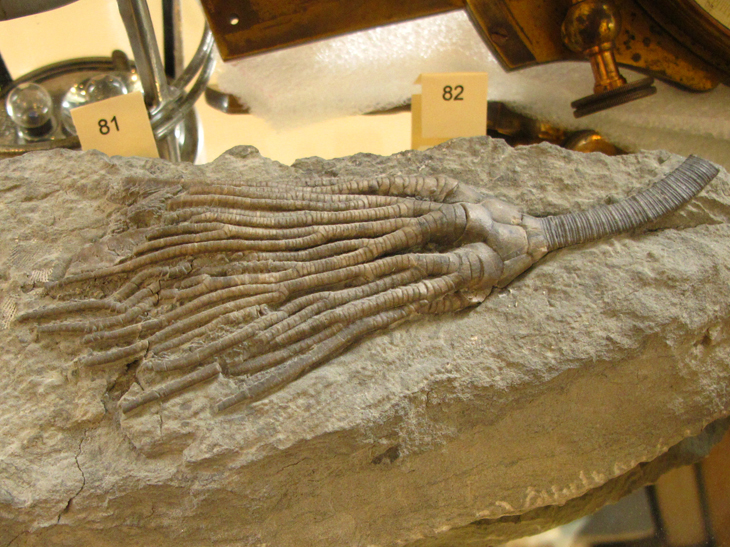
Fossilized Crinoid Stem
Dr. Kevin Minch, The Truman Institute
Surveyor's Instrument
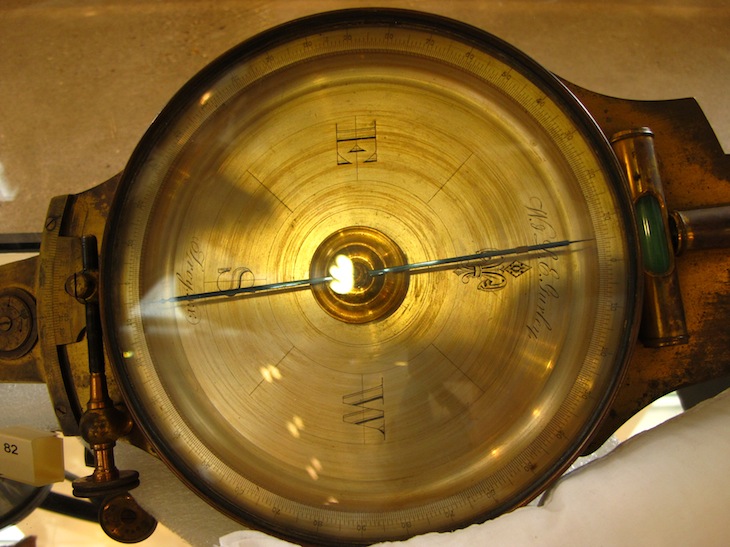
Surveyor's Instrument
Kirksville State Teachers College, Courtesy of E. M. Violette Museum
Fossilized Fish
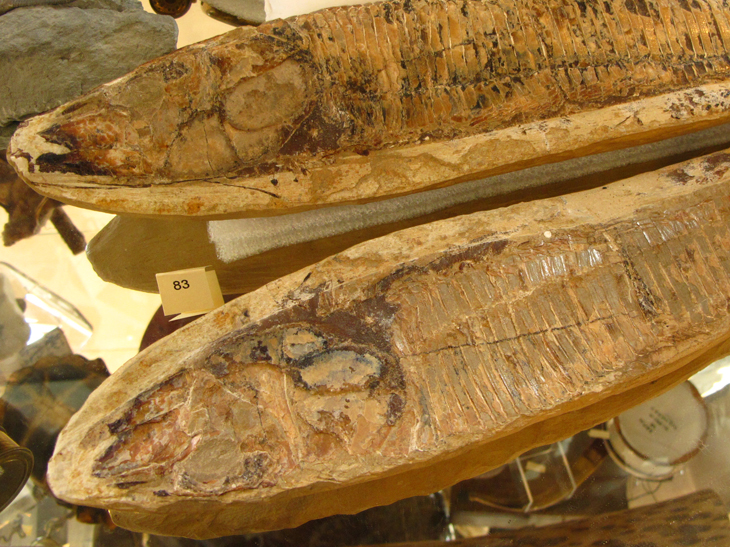
Fossilized Fish
Dr. Kevin Minch, The Truman Institute
This specimen was, amazingly enough, found on accident by Dr. Minch, after accidentally tripped over and kicked a rock which then broke in half to reveal the fossil inside. Talk about stumbling upon treasure!
Fossilized Fern

Fossilized Fern
Dr. Kevin Minch, The Truman Institute
Phrenology Head

Phrenology Head
Dr. Robert Tigner, Psychology Department
Part of the supposed evidence supporting Phrenology was the incorrect assumption that the skull fit over the brain perfectly and that the bumps on your head matched the bumps on your brain. Even small advancements in cranial surgeries easily debunked this myth.
Cycladic Head
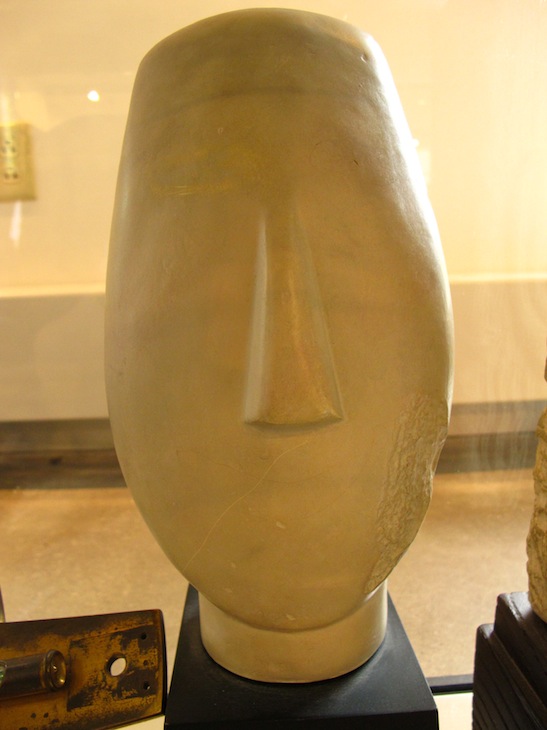
Cycladic Head
Dr. Lynn Rose, History Department
Reproduction of Greek original c. 2500 BCE.
Romanesque Head of Moses
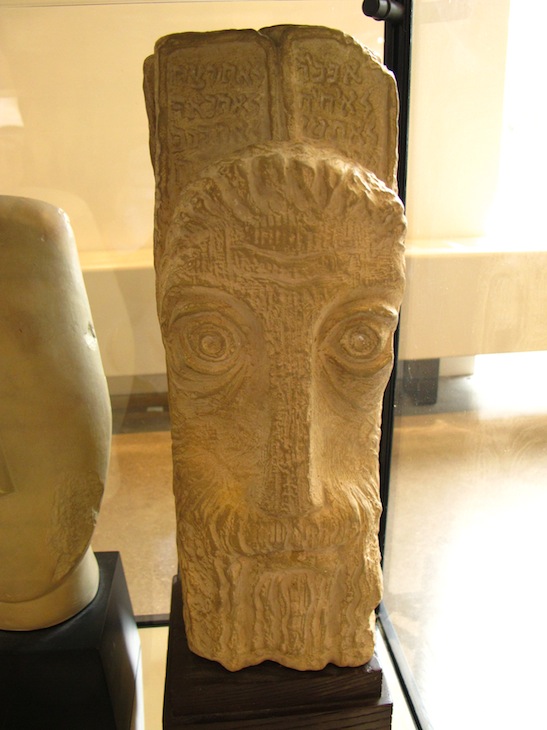
Romanesque Head of Moses
Dr. Lynn Rose, History Department
Reproduction of a French original c. 1050 BCE.